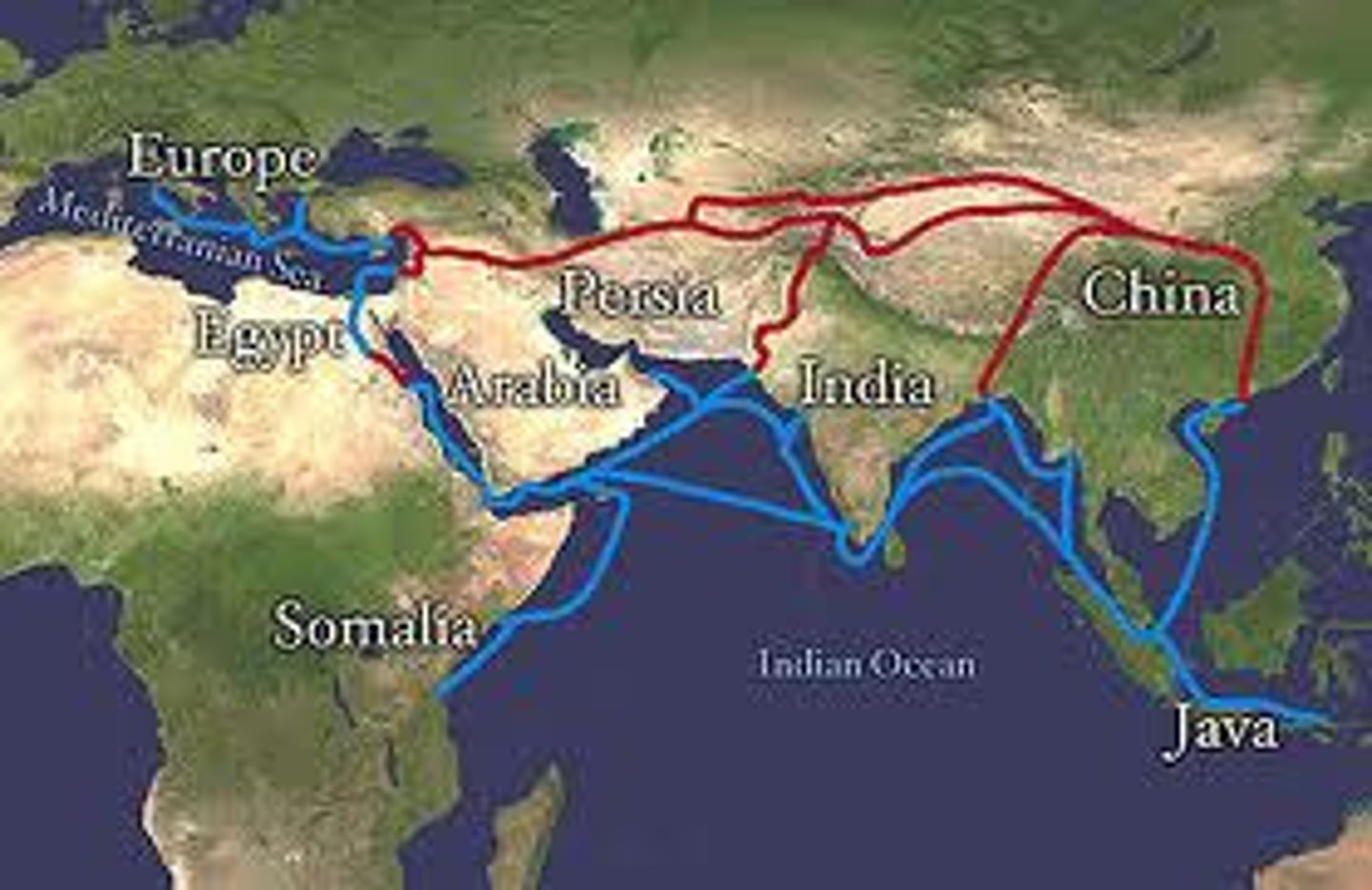AP World History: Modern Unit 1 & 2
1/79
There's no tags or description
Looks like no tags are added yet.
Name | Mastery | Learn | Test | Matching | Spaced |
|---|
No study sessions yet.
80 Terms
centralized states from 1200-1450
Islamic caliphates; Song/Ming Dynasty; Delhi Sultanate; Mali and Songhai Empires
examples of religious expansion acting as a unifying social force in state-building from 1200-1450
Islam as a system of shared beliefs and common language throughout Dar al-Islam; Confucianism in the Chinese civil service examinations to provide organization and defined societal roles; Christianity providing cultural organization to decentralized Europe during the Middle Ages; Hinduism and Buddhism used to consolidate power through the caste system in South/Southeast Asia
Buddhism
a religion that originated in India and spread to most Eastern civilizations, such as China, Southeast Asia, and Japan. It appealed strongly to lower class members of society (no hierarchy) and spread to civilizations via trade routes.
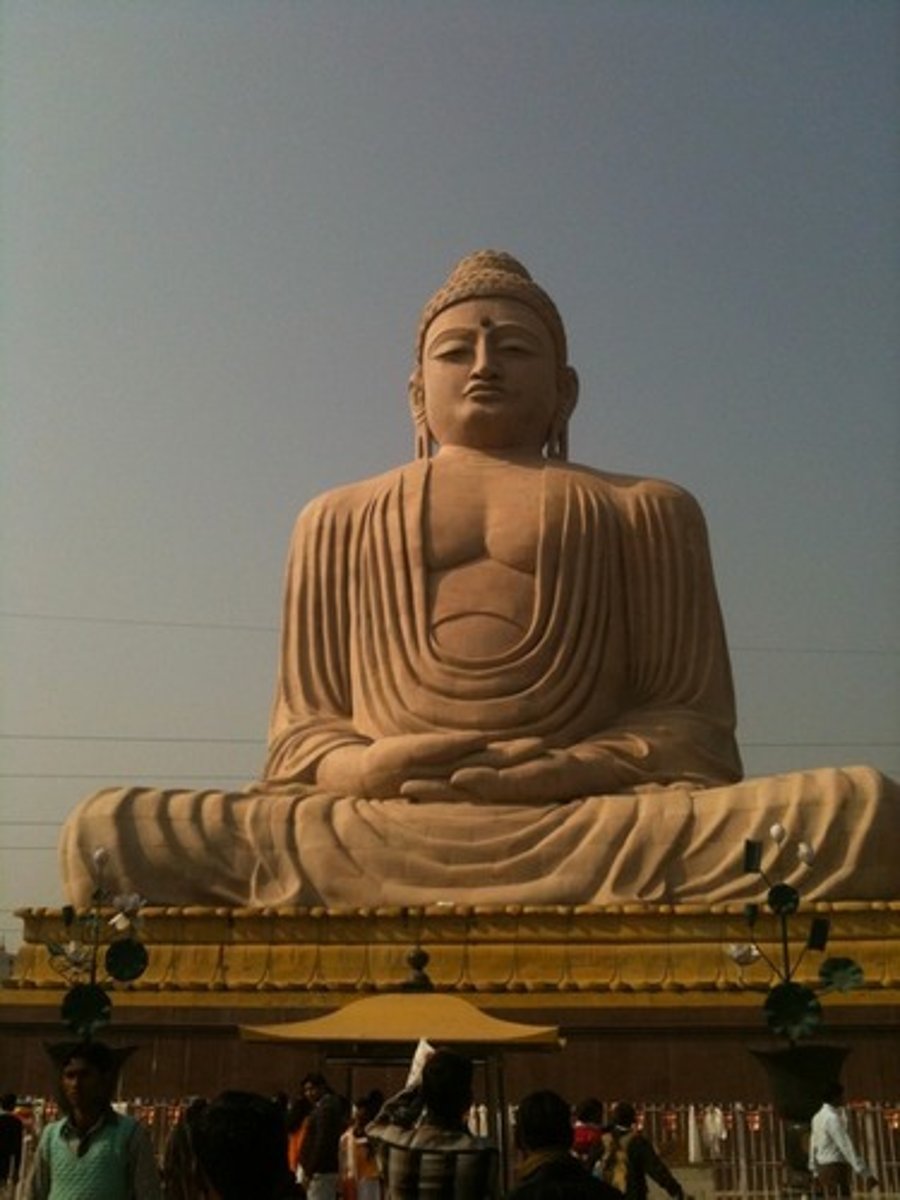
Christianity
a religion that originated from Jewish groups in the Middle East and eventually became dominant in European society after becoming the official religion of the Roman Empire. Often tied together with the state in European civilizations.
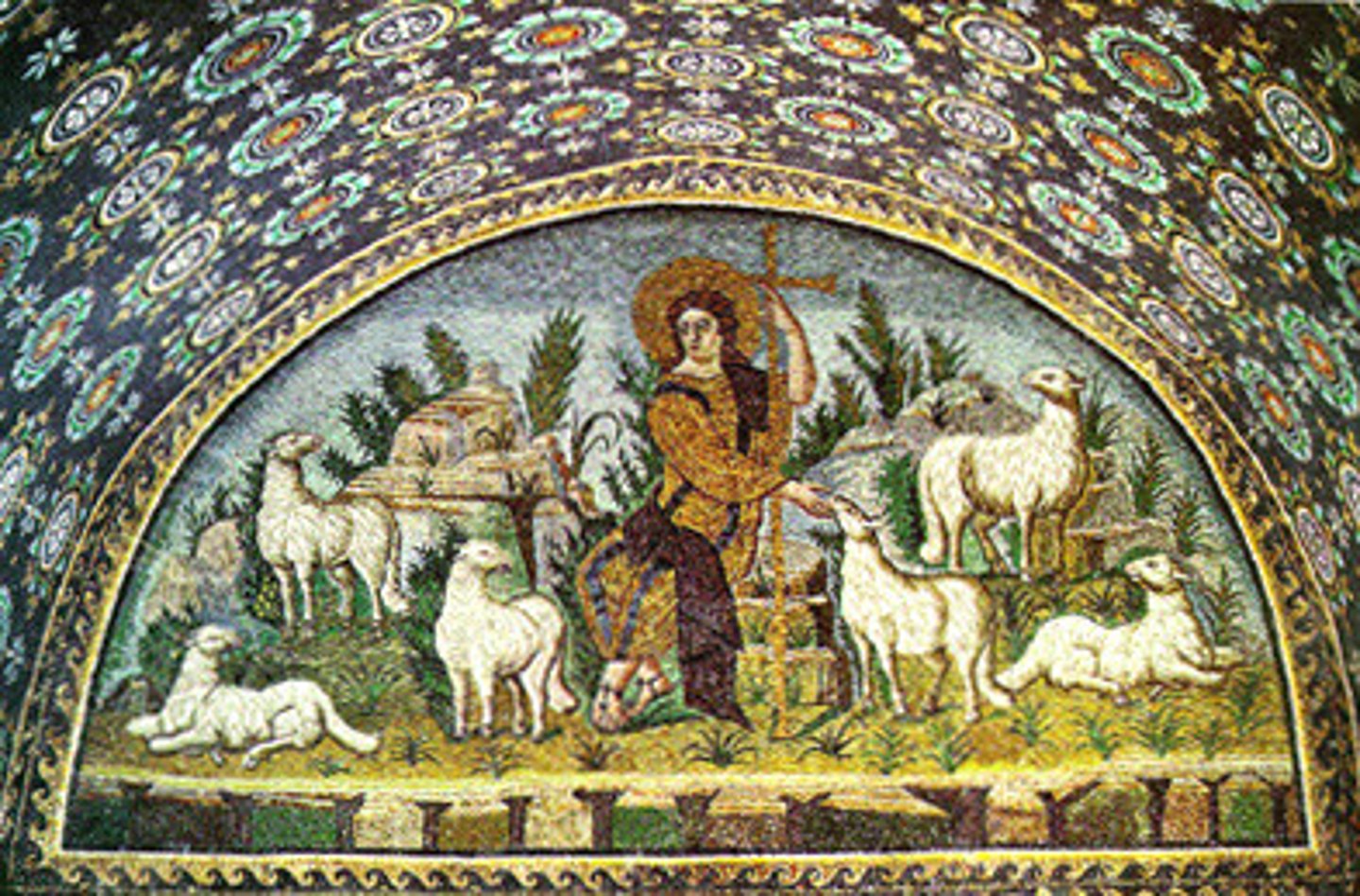
Confucianism
The system of ethics, education specific to China and Chinese culture that examines the fundamental relationships in societies. The beliefs are compatible with other religions and were integrated into the Chinese government, leading to distinctive roles in society.

Hinduism
a major religious and cultural tradition of South Asia developed from Vedic texts that include a caste system. This system prevented its acceptance in other parts of the world. Buddhism spawned out of Hinduism.
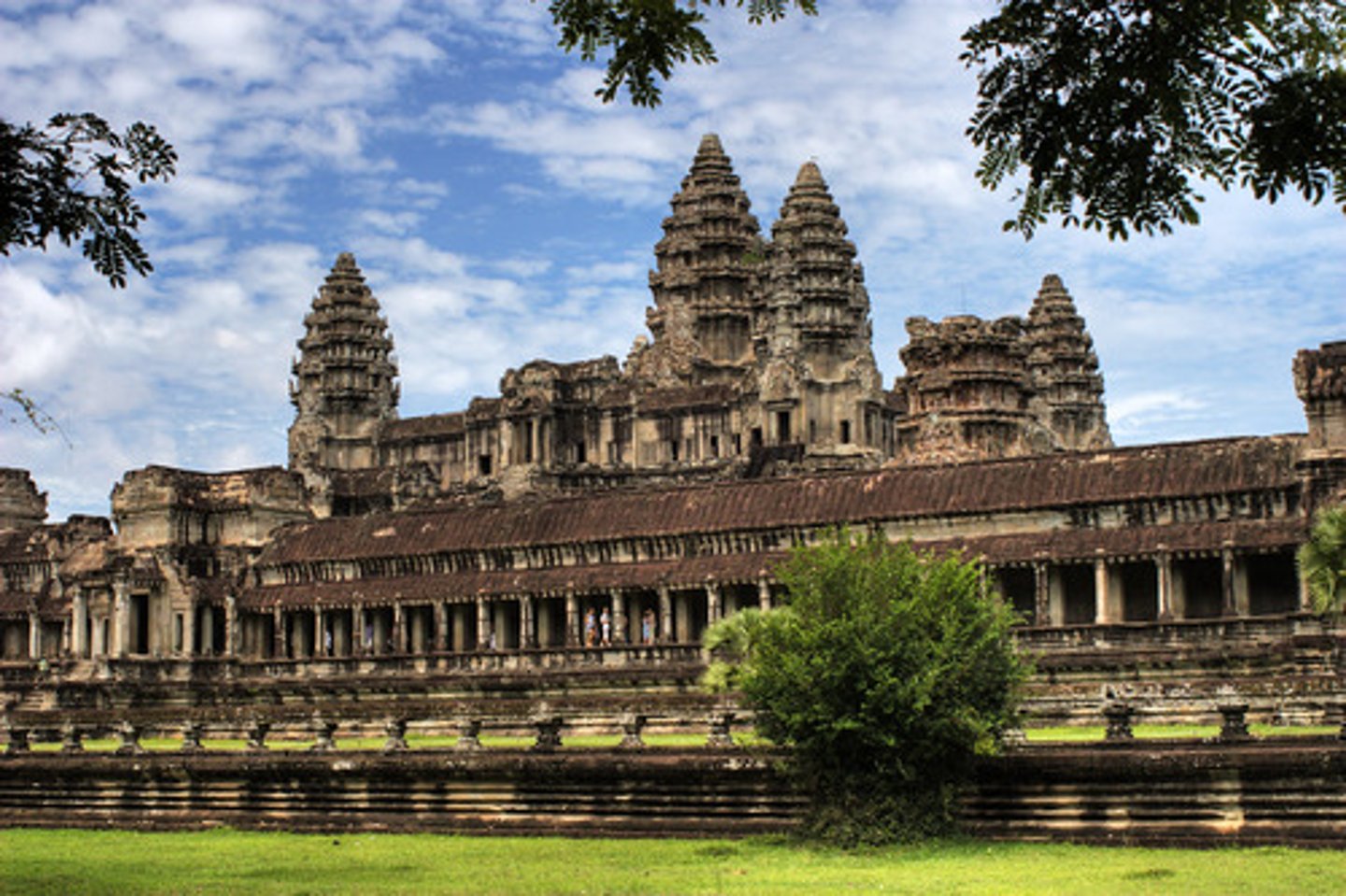
Islam
a religion that initially was centered in the Muslim caliphates in the Middle east, but then spread to North Africa, central Asia, Southeast Asia, and parts of Europe. Was split early on into the Shi'a and Sunni sects and under the Abbasid Dynasty, spread across Afro-Eurasia, continuing the growth of Dar al Islam.
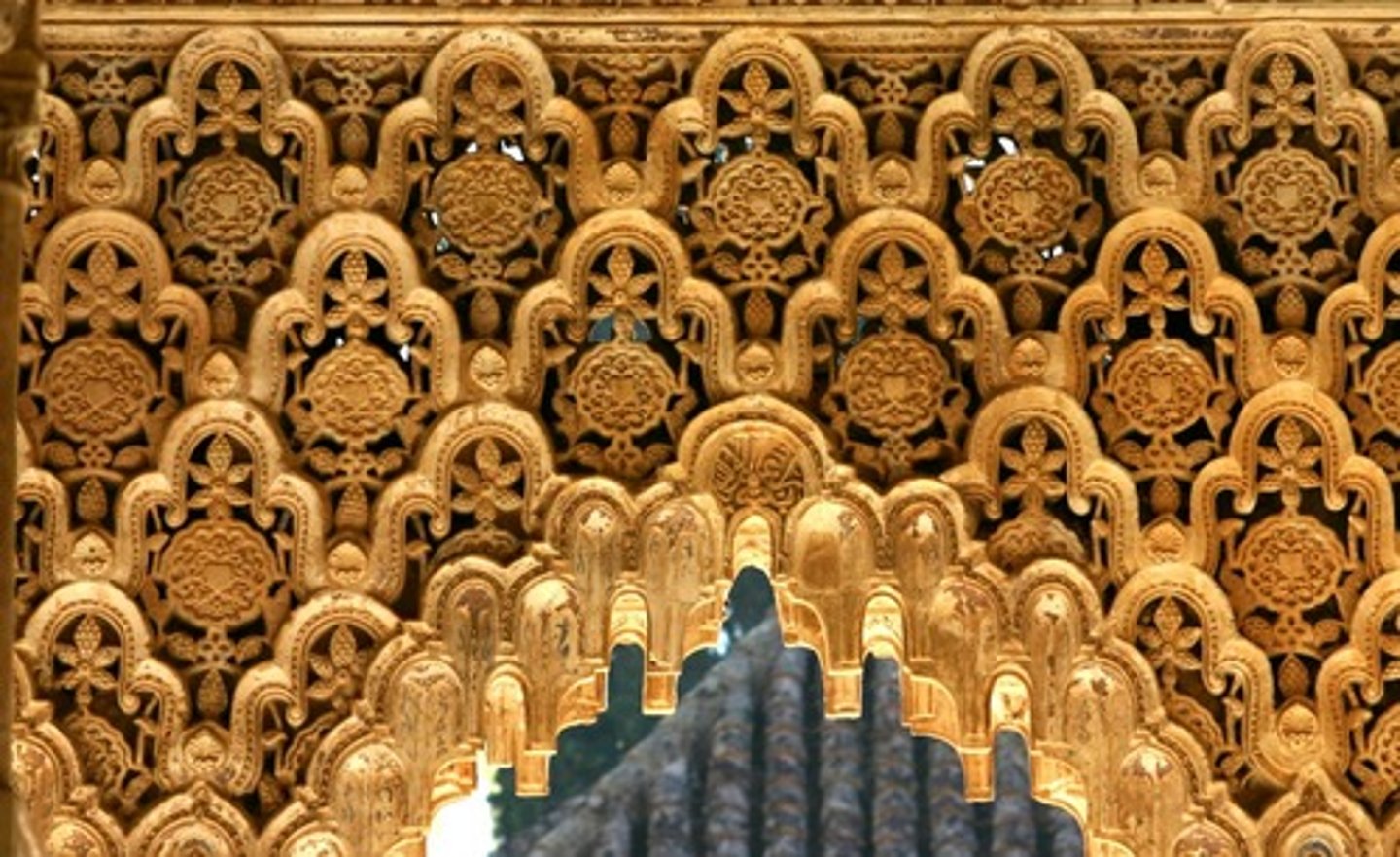
Dar al-Islam
an Arabic term that means the "house of Islam" and that refers to all lands under Islamic rule; the Islamic world
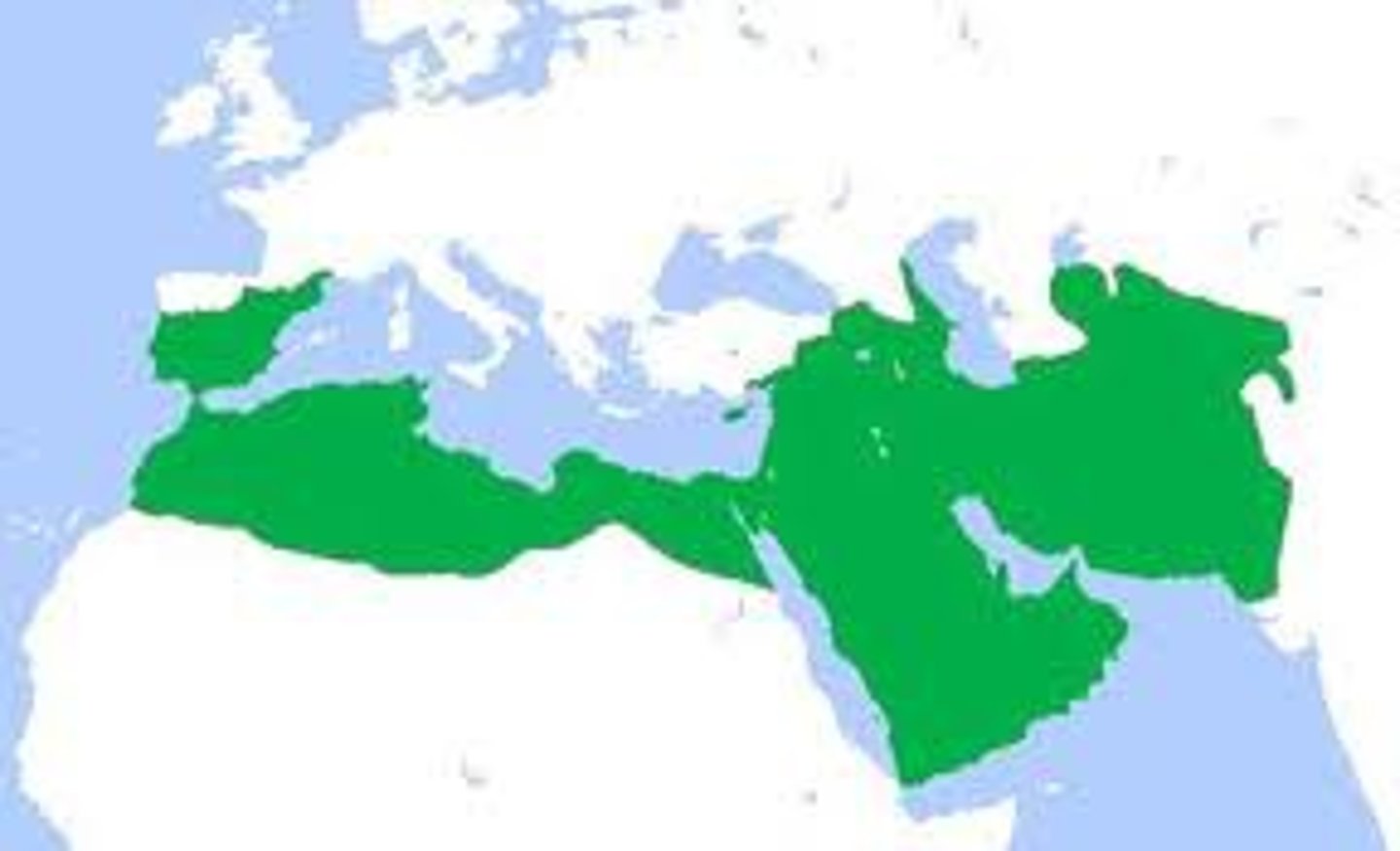
Judaism
a religion that originated from the Hebrews in the Middle East; was the first major monotheistic religion and spawned the other two big monotheistic religions: Christianity and Islam.
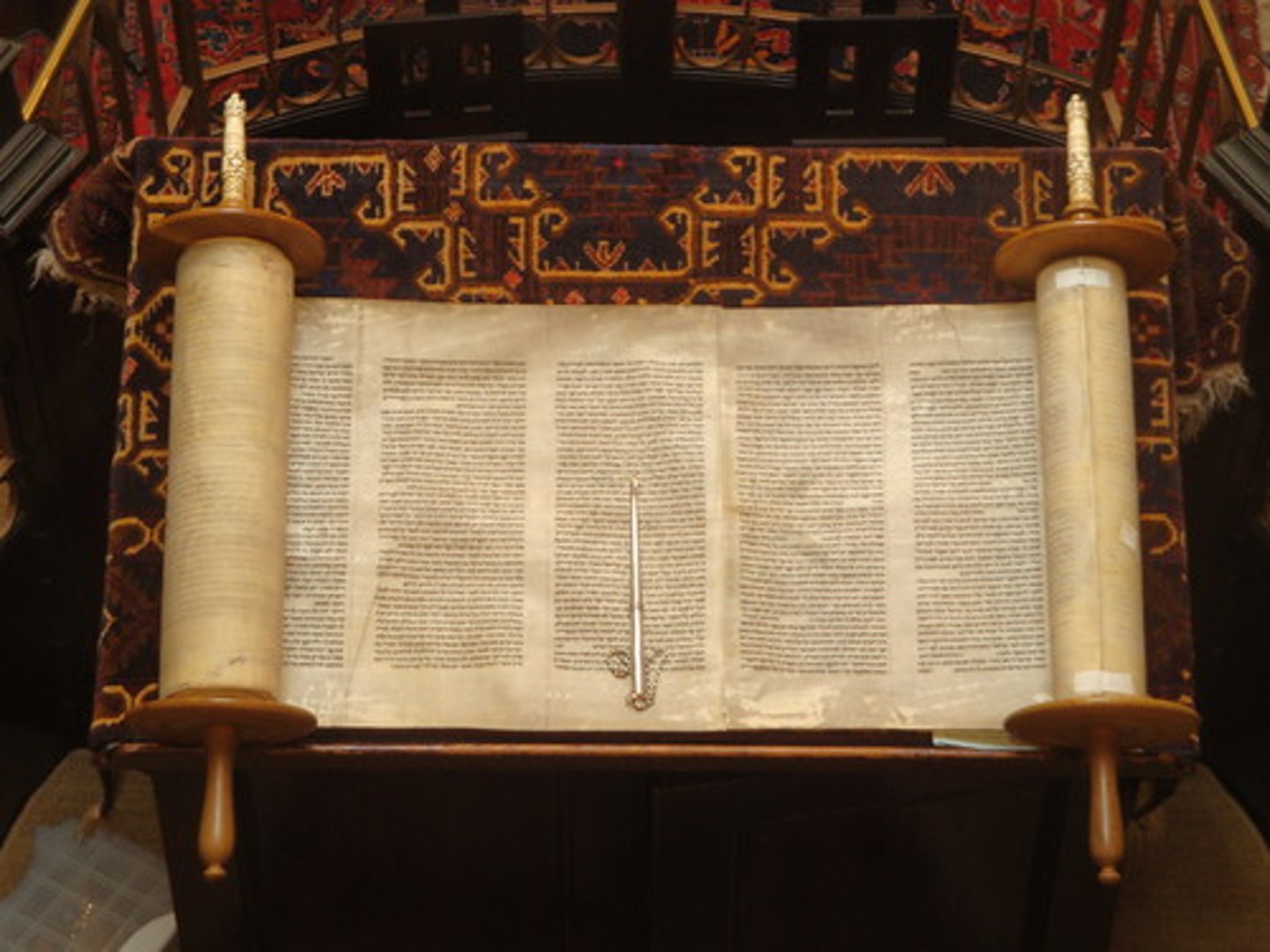
Abbasid Dynasty
The 3rd dynasty of the Islamic Caliphate, ruling from 750-1258. Had a golden age of arts and science, where Baghdad emerged as a cultural center
Islamic Empire
also known as the Islamic caliphates --States based on Islam which developed into multi-ethnic trans-national empires. During the medieval period, three major caliphates succeeded each other: the Rashidun Caliphate, the Umayyad Caliphate, and the Abbasid Caliphate
How/why did the Abbasid caliphate decline in the 1200-1450 era and what took its place
Abbasids declined because of internal struggles which led to decentralization (Sunni vs Shia rivalries; ethnic differences in multiethnic empire; destabilized central authority) and external struggles, most notably the Mongol invaders. This led to the rise of Islamic states, such as the Delhi sultanate and the Mamluk Sultanate.
Song Dynasty
The Chinese dynasty from 960-1279 that placed much more emphasis on Confucian merit-based civil administration, industry, education, and arts other than military. Had a cultural golden age with many innovations such as gunpowder, compasses, and improved agricultural practices.
How did innovations in Song China help it unify the empire and keep China as an economic powerhouse?
Gunpowder helped in warfare and defense; the Grand Canal connected different regions of China and promoted interregion trade; their expertise in silk and porcelain production helped the state commercialize; the introduction of Champa Rice as a tribute from Vietnam helped sustain a larger population, which enabled an explosion in population.
How did the Song Dynasty in China compare to the Abbasid caliphate in the Middle East?
While both empires had Golden Ages, while the Song continued to flourish socially, economically, and politically, the Abbasids began to decline in these areas, giving way to Islamic states (still unified under Islam)
How did Confucianism and unified religion affect the role of women in Chinese society?
The adherence to a new Confucianism justified the subordination of women. Foot binding became a widespread practice.
Yuan Dynasty
(1279-1368 CE) The dynasty with Mongol rule in China; centralized with bureaucracy but structure is different: Mongols on top, Persian and other foreign bureaucrats as nobles, and ethnic Chinese on the bottom.
Ming Dynasty
A major dynasty that ruled China from the mid-fourteenth to the mid-seventeenth century. It was marked by a great expansion of Chinese commerce into East Africa, the Middle East, and Southeast Asia. Had a Golden Age. Succeed Mongol Yuan Dynasty, so stressed Chinese values with Confucianism.
Middle Ages
The time between the collapse of the Roman Empire in the 5th century CE and the beginning of the Renaissance in the 14th century. Known as a Dark Age for European (but other parts of the world flourished)
Feudalism
A regional system of state-building with a rigid social hierarchy. In Western Europe, feudalism replaced the centralized Roman Empire after its fall. Feudalism was also found in the Japanese shogunate during this time, but these forms developed individually of each other.
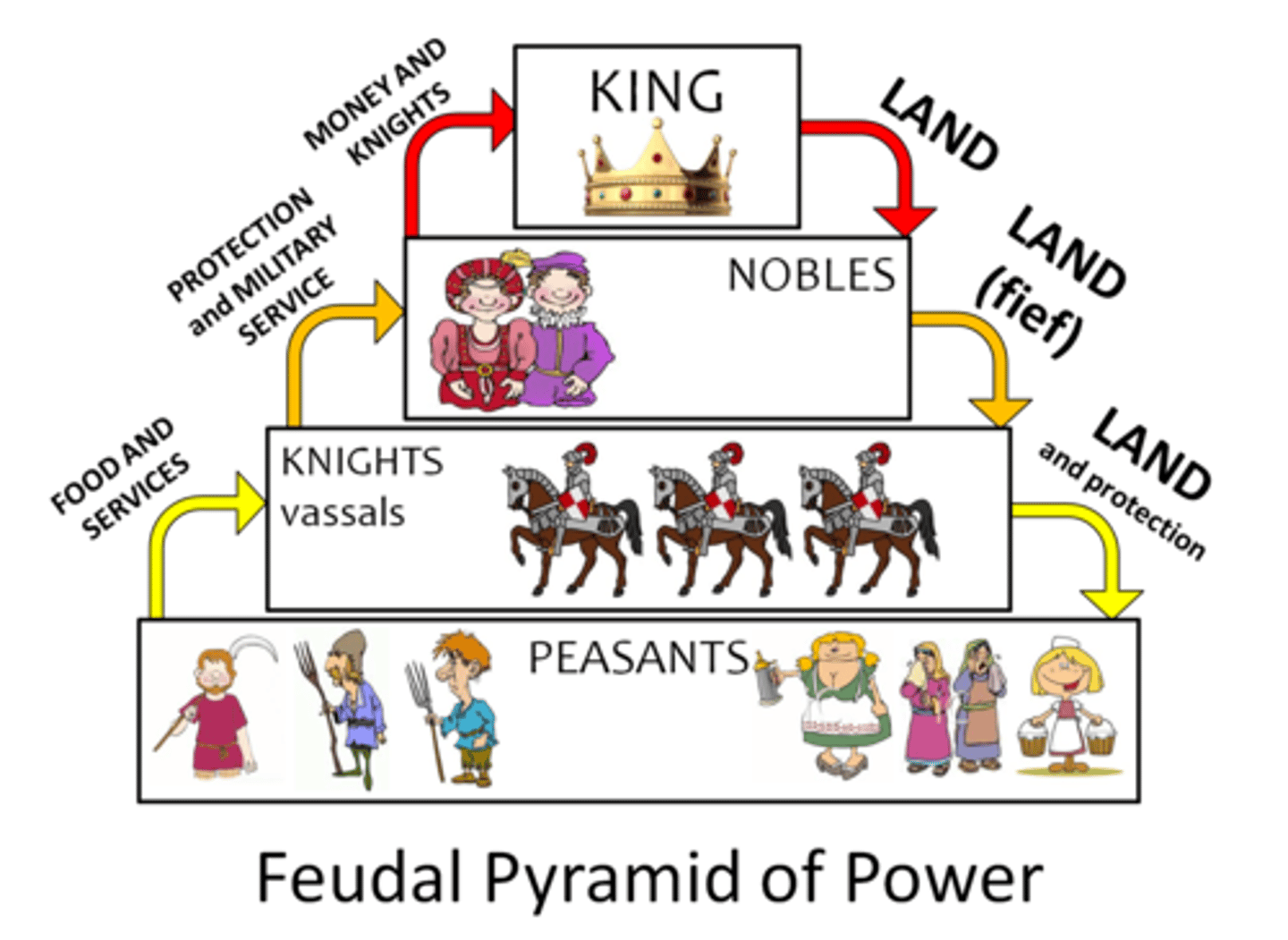
Nobles
In the European feudal system, the people below the king, who in exchange for military service and loyalty, was granted power over sections of land in the kingdom (in feudalism LAND = POWER)
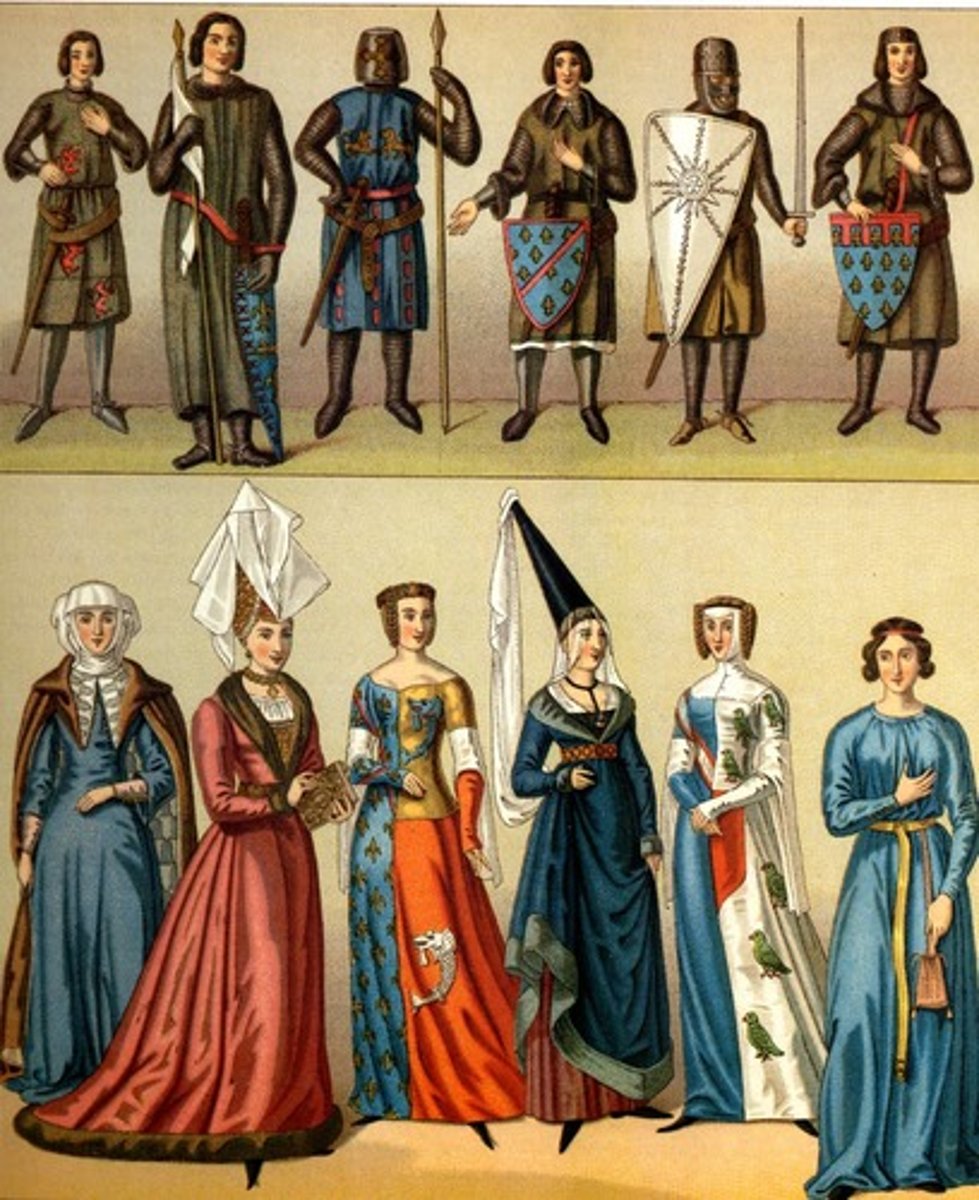
Vassals
Lesser lords who pledged their service and loyalty to a greater lord or noble in return for smaller sections of land from the noble
Peasants/Serfs
Laborers tied to their land with few rights who were expected to farm, provide services, and pay taxes to their powerful noble, in return for food and protection.
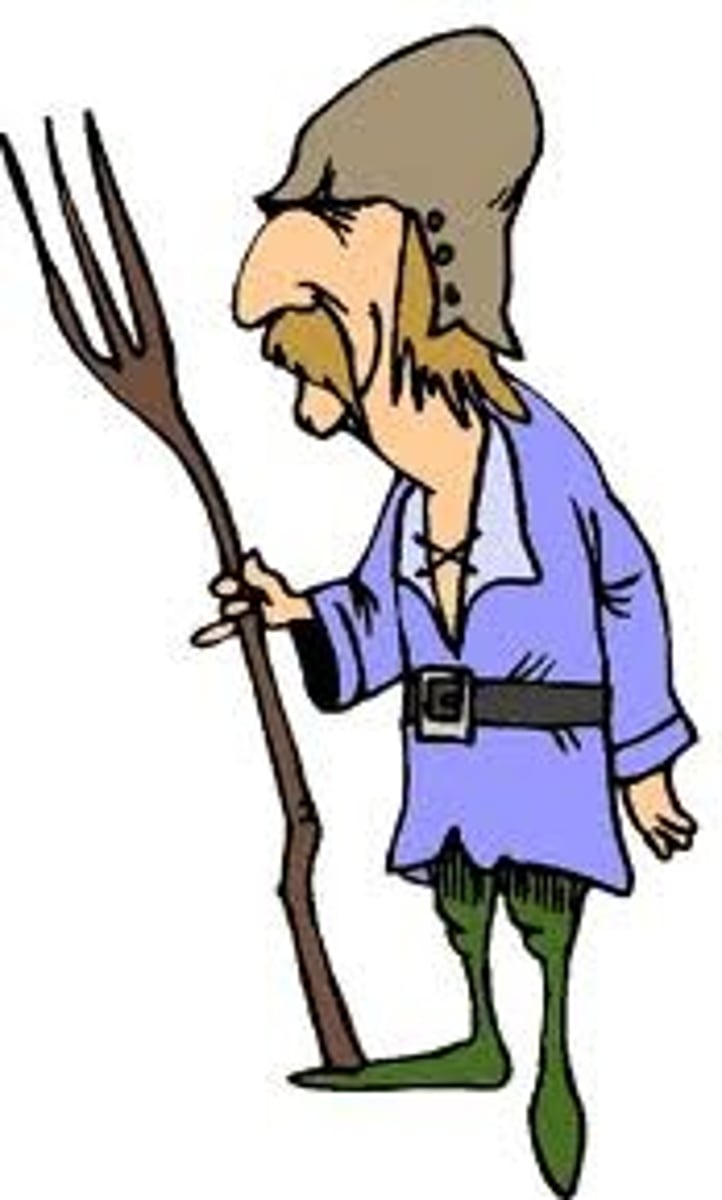
Primogeniture
A system of inheritance in which the eldest son in a family received all of his father's land. This was a part of the patriarchal societies found in Western Europe during the Middle Ages, as societies were heavily male-dominated.
How did Europe created more powerful states that eventually dominated their feudal societies?
Feudal systems and manorial life lost power to more centralized monarchs, such as Spain Christian kingdoms expelling Muslim leaderships from Spain (which led to the Inquisition of Muslims, Jews, and other non-Catholics)
What were the key differences between Feudal Europe and the Islamic Empire in the 1200-1450 time period?
During the Abbasid Dynasty, Islamic merchants became more worldly, trading on a global scale; European lords became increasingly provincial and isolated, as they usually just governed their manors.
Why did the Middle Ages reach its height in Europe by the 11th century?
Global trade rekindled in Europe and they formed more trade links across the continent. Trade alliances such as the Hanseatic League, increased interdependence between townships in Europe, which drove Europe towards nationhood and centralization. Also, the arts began to make progress during this time, shown through the characteristic architecture or this time period. European contact with the Middle East also increased because of the Crusade and more trade routes--> led to the birth of scholasticism and "heresies".
Hanseatic League
A collection of Northern European and Baltic city-states that established common trade practices and defensive alliances and came to dominate commercial activity in northern Europe from the 13th to the 15th century. The League resulted in the emergence of a middle class and set a precedent for large European trading groups (interdependence as opposed to isolated feudalism)
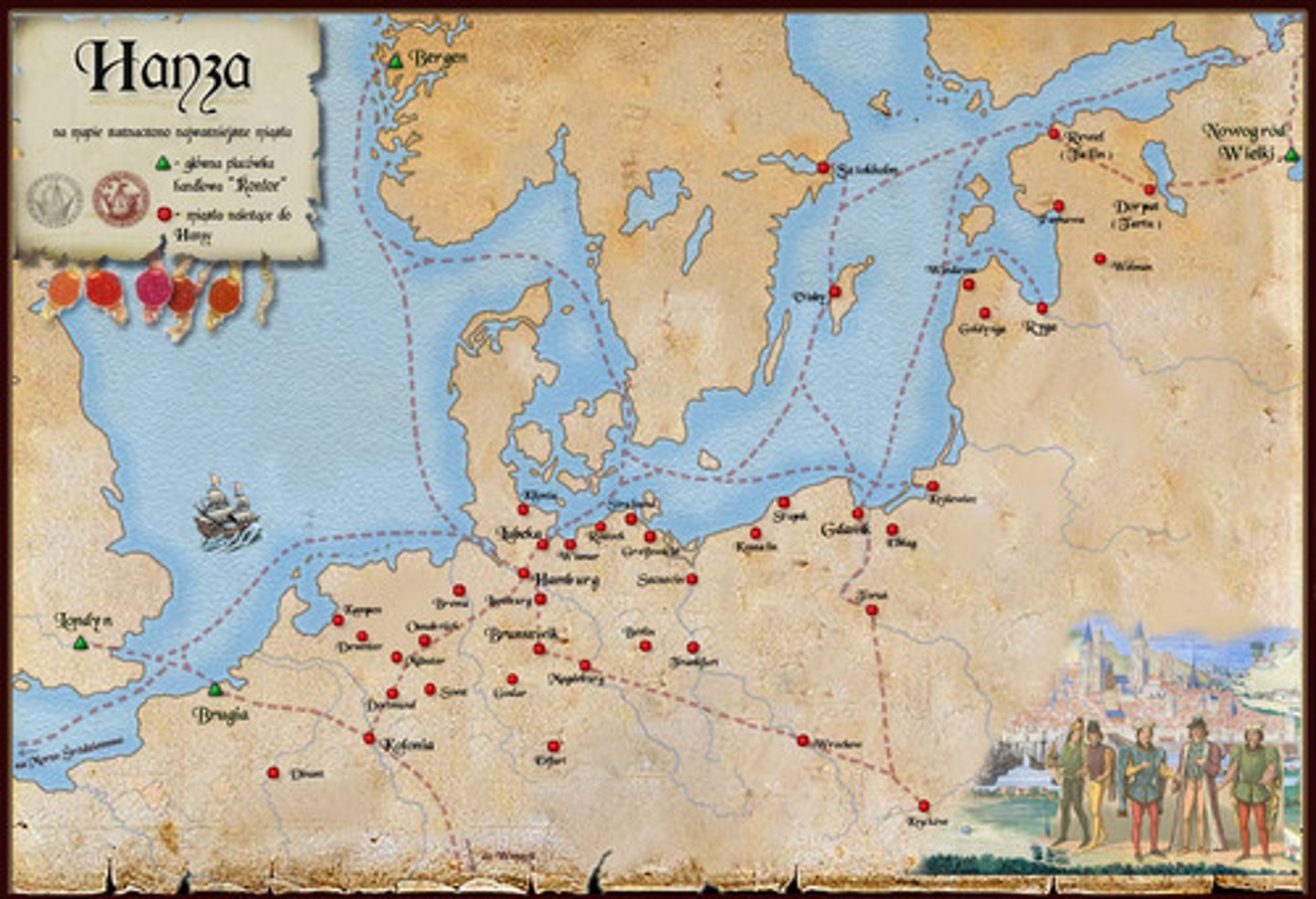
Crusades (1095-1291)
The religious wars between Western Catholic Europe and the Islamic Turks over the holy lands in Jerusalem. These wars led to increased contact between Europe and the Middle East, which led to a revival of Greek texts in Europe, resulting in new thoughts and perspectives of the previously insular Europeans.
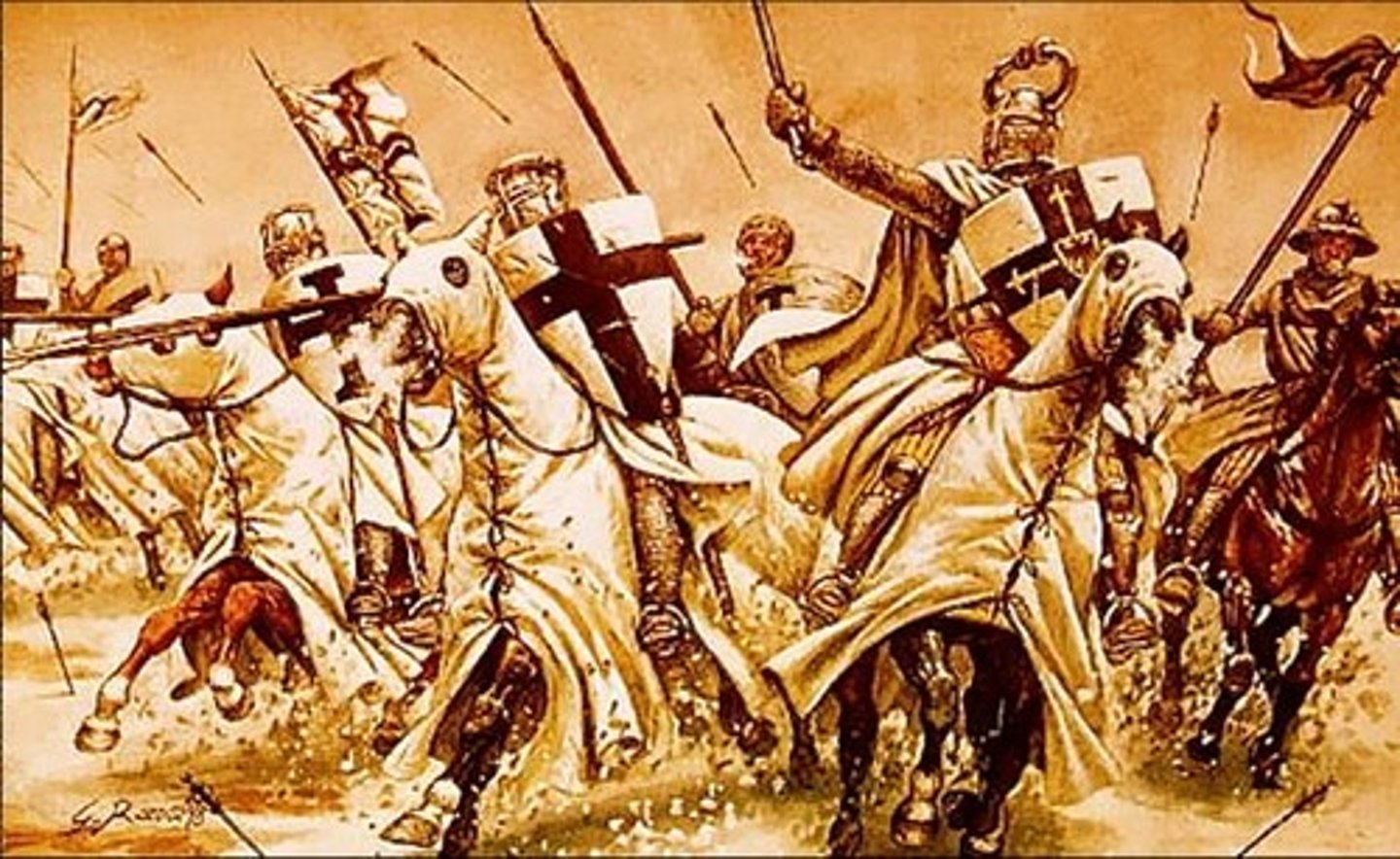
Heresies
Religious practices or beliefs that do not conform to the traditional church doctrine
Inquisition
The formalized interrogation and persecution process of perceived heretics set in motion by Pope Gregory IX
What the effect of the Bubonic Plague on European society?
With more than a third of the entire European population dead, traditional social structures (such as feudalism) nearly collapsed-- severe depopulation and migration from village to cities as a result of job openings led to the decline of serfdom. The epidemic sped up social and economic movements such as a shift towards a commercial economy, more individual freedoms, and the development of new industries.
Why did European societies strengthen at the close of the Middle Ages?
Instead of being split in feudal kingdoms, Western Europe began to consolidate into "nation-states" along cultural and linguistic lines.
How did England organize into a nation-state and solidify its power towards the end of the Middle ages?
England unified into a strong monarchy early on (under William the Conqueror), and in 1215, the king signed the Magna Carta, which gave more rights to nobles and the growing burgher class and set the foundation for the English Parliament.
Magna Carta
(1215) a charter of liberties (freedoms) made the king obey the same laws as the citizens of his kingdom and gave more rights to the nobles and middle class and laid the foundation for Parliament.
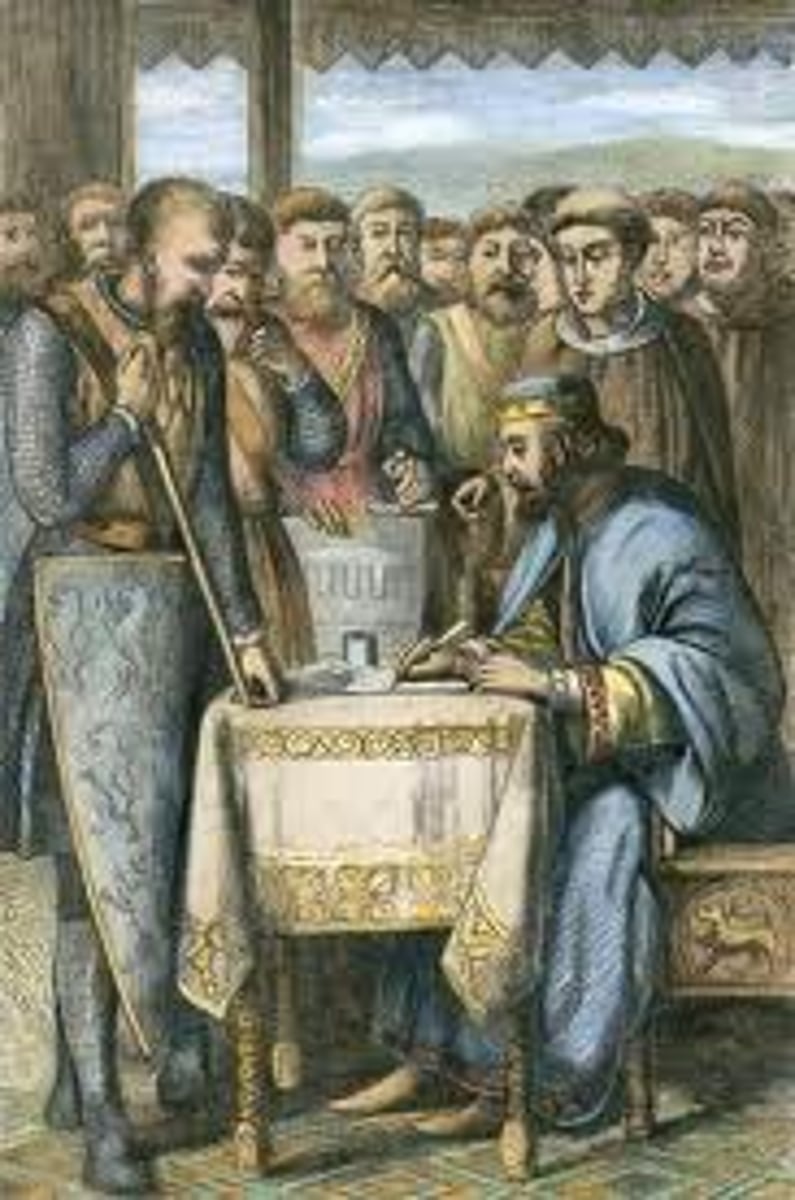
Burgher class
Shop keepers, artisans, guild masters, and guild members

How did France organize into a nation-state and solidify its power towards the end of the Middle ages?
The formation of France, while initially tied up with England, eventually centralized under the Bourbon monarchs after the Hundred Years War, which led them to eventually become a unified and major power on the European continent.
Hundred Years War (1337-1453)
Series of campaigns over control of the throne of France, involving English and French royal families and French noble families. Led to the centralization of France under the Bourbon monarchs and united France under its own leadership.
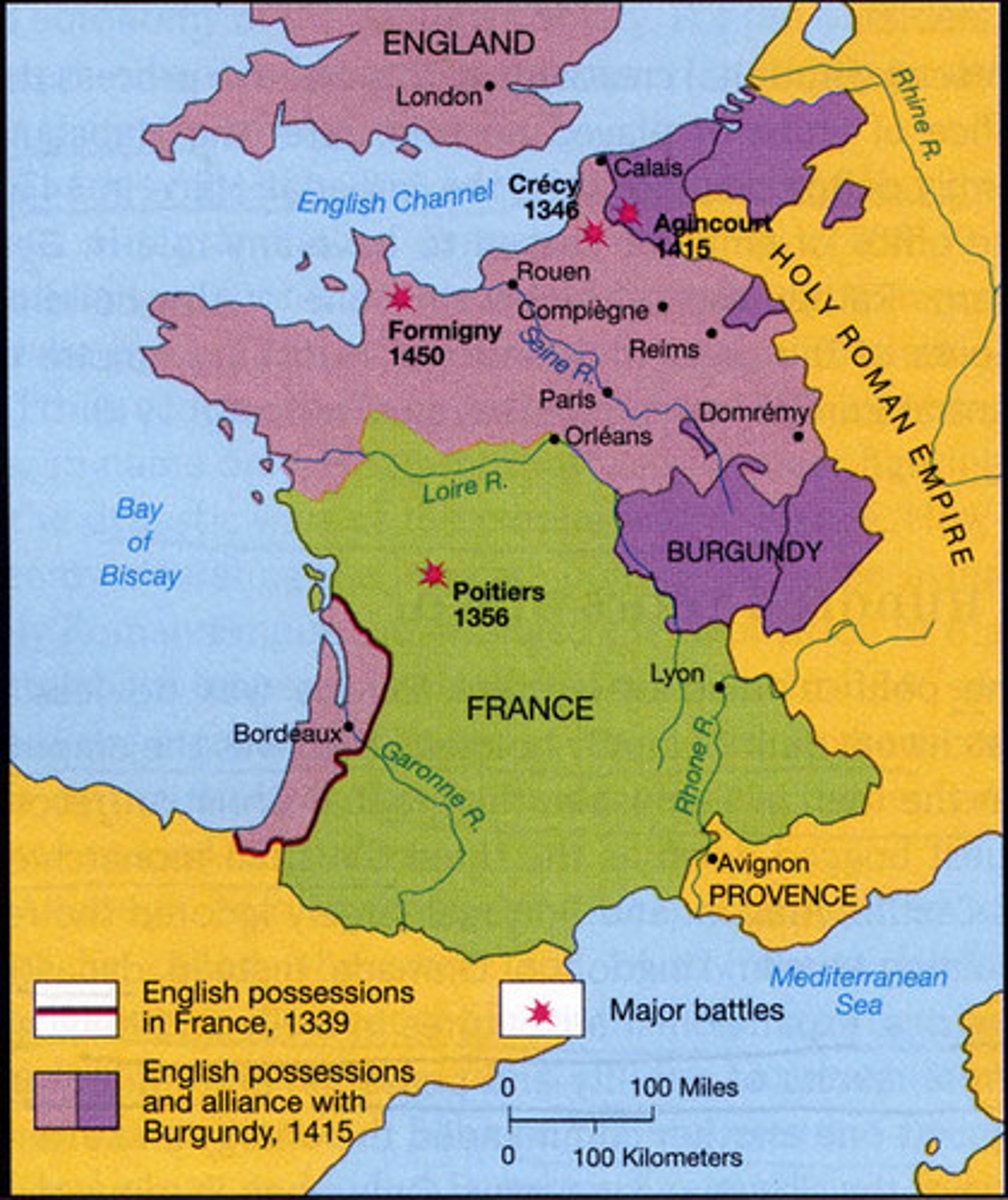
Why did Germany and Italy not centralize when achieving statehood in the 13th century?
Both Germany and Italy became decentralized in a group of strong, independant townships (city-states) where merchants and tradespeople became more powerful. For ex. in northern Germany, the Hanseatic League led the region's progress in international trade.
How did Spain organize into a nation-state and solidify its power towards the end of the Middle ages?
Spain was united by Queen Isabella of Castile and King Ferdinand of Aragon into one Spanish kingdom in 1469 with their marriage. They allied with the Catholic Church, which led to religious intolerance within Spain and the Spanish Inquisition (where they persecuted/converted non-Catholics). This eventually pushed Spain to lead Europe in embarking on imperial conquest and expansion into the New World.
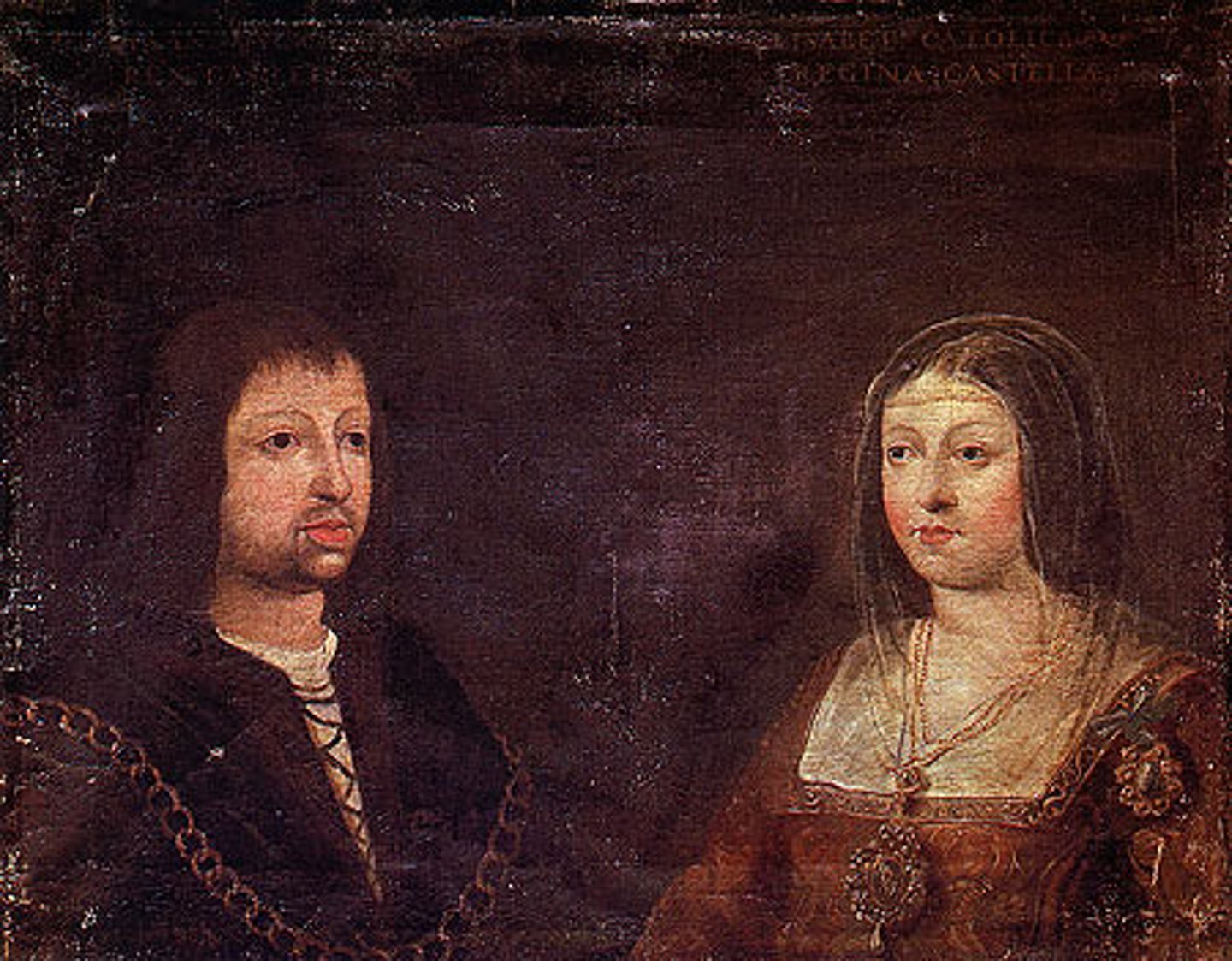
What did all major world religions have in common in the 1200-1450 era, and what effect did they have?
All religions spread during this time period, especially Islam (dominated), Christianity, and Buddhism. As conversionist religions sent out missionaries to new places, this weakened indigenous religions.
How was the emergence of large cities and urbanization related to an increase in global trade in the 15th century?
Traders and merchants needed places to conduct business, so cities grew as a result of trade contacts and networks. These cities emerged as cultural centers, as they usually showcased the wealth and power of rulers who controlled and benefited from the trade. Cities along the Silk Routes, such as Baghdad, Merv, and Chang'an.
How did Japan develop in the region 1250-1400?
Japan remained relatively isolated-- sometimes only trade of goods, ideas, and religions took place with China (though China did not penetrate Japanese identity-- aristocracy and Shintoism remained strong). A type of feudalism emerged (independent of European feudalism) during this time
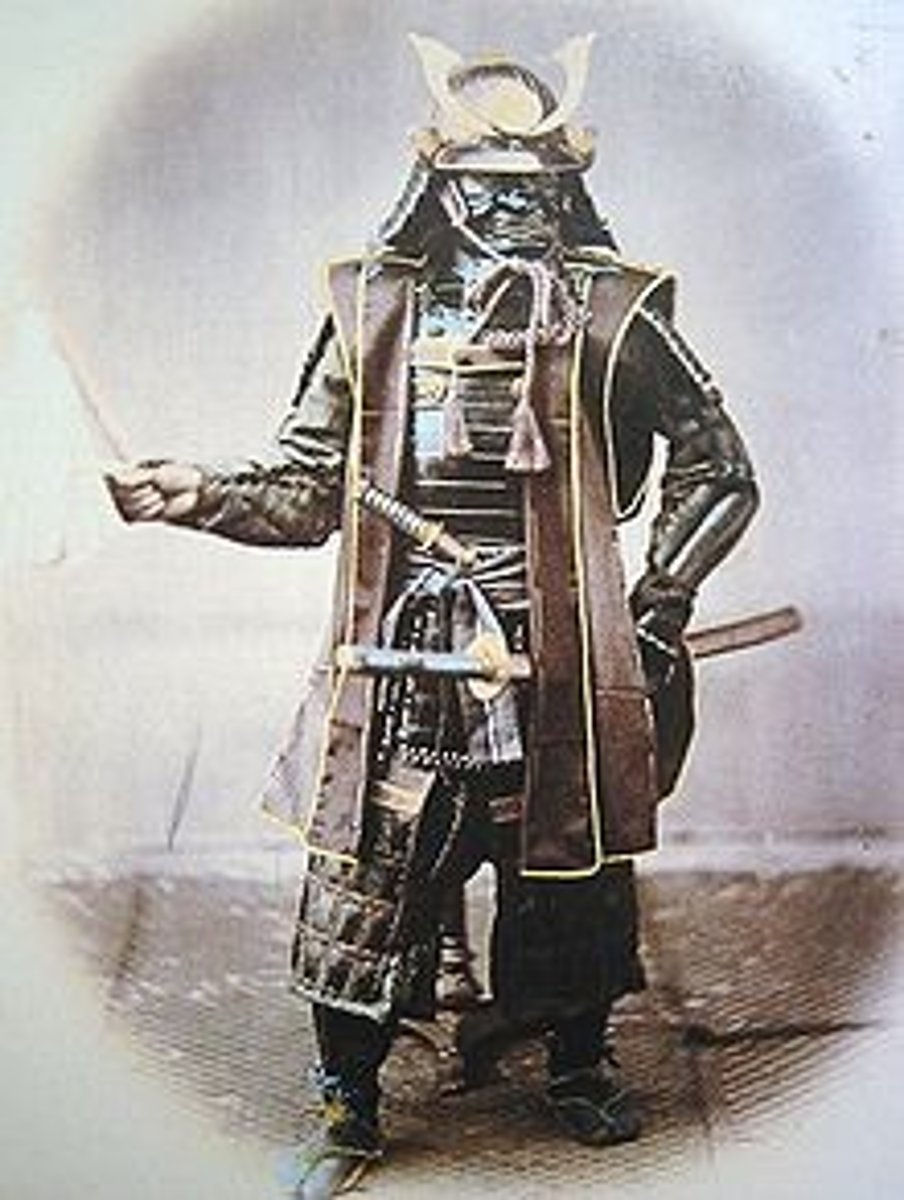
Shogunate/Japanese Feudalism
The Japanese system of centralized government under a shogun, who exercised actual power while the emperor was reduced to a figurehead. Rigid social hierarchy with emperor/shogun on top, daimyos/samurais, followed by peasants/artisans/merchants at the bottom. The samurai followed the Code of Bushido, and women lost all freedoms during this time period.
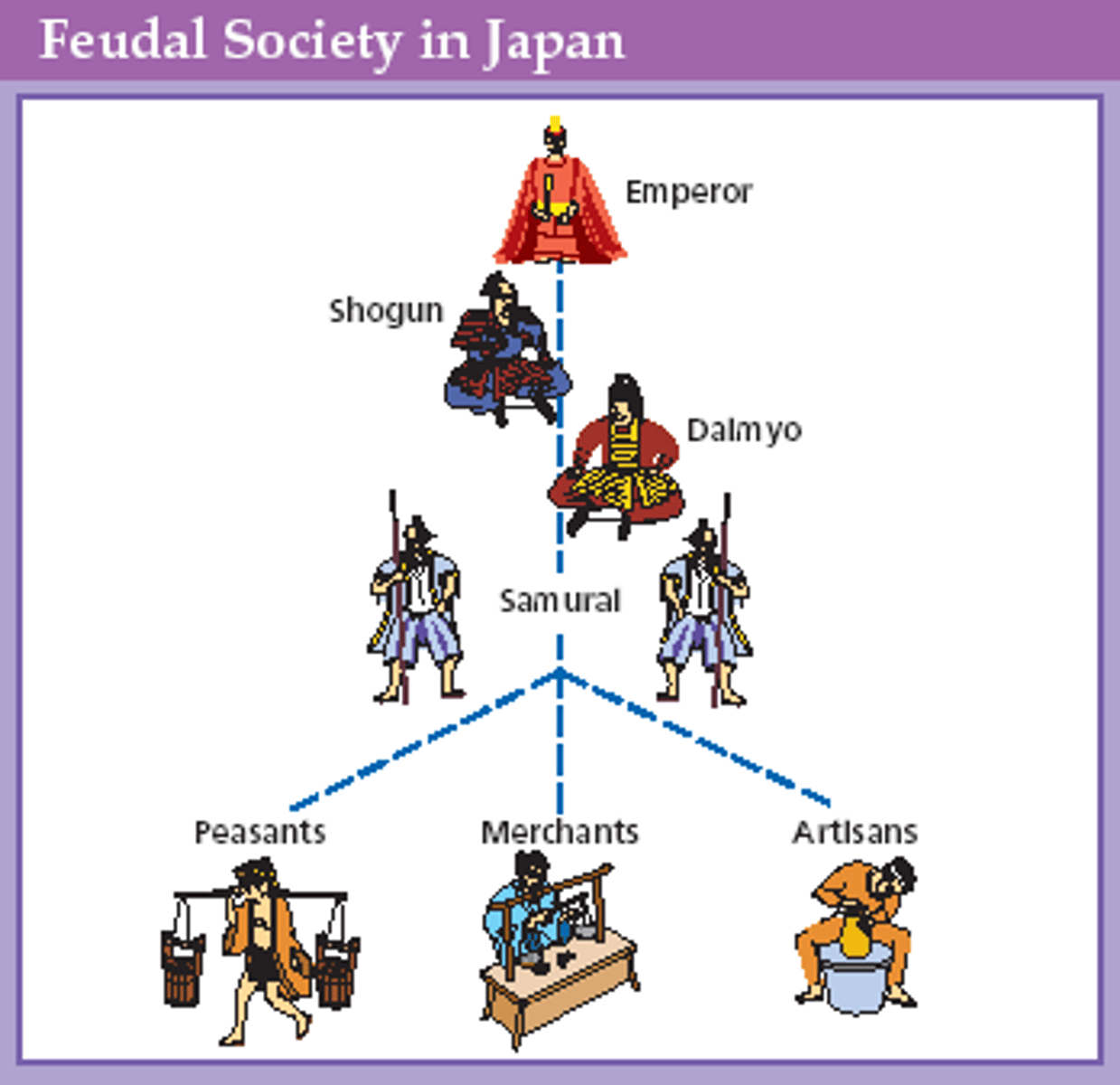
How did European and Japanese Feudalism compare and contrast?
Both had rigid political and social structure and honor code. Differences were in treatment of women and legal arrangement.
What major religion made its way to the Indus Valley in the 10th century?
Islam was introduced to South Asia after the Delhi Sultanate occupied India after defeating the more disorganized Hindu groups.
Jizya tax
non-Muslims had to pay this in exchange for protection and keeping their religion in the Delhi Sultanate.
How did the Delhi sultanate spread Islam?
The Delhi sultanate converted people by military invasion (converted 25% of northern Indians). Many Indians converted to avoid the jizya tax and more opportunities to succeed in government/business. This also increased trade between India and other parts of the Islamic world.
How did South Asians use trade to expand their influence in this period from 1200-1450?
The Vijayanagara Empire and Chola Kingdom promoted trade, so merchants spread Hinduism and Buddhism to Southeast Asia (Khmer Empire) and became powerful trade partners. This unified them so they could maintain control.
The Delhi Sultanate
The first Islamic government established within India from 1206-1520. Controlled a small area of northern India and was centered in Delhi. Although they ruled with practices similar to the Abbasid Empire, they were Turkish speaking (not Arabic). "Theoretically" religiously tolerant, but tried to convert many, instituted a jizya tax, and destroyed Hindu temples.
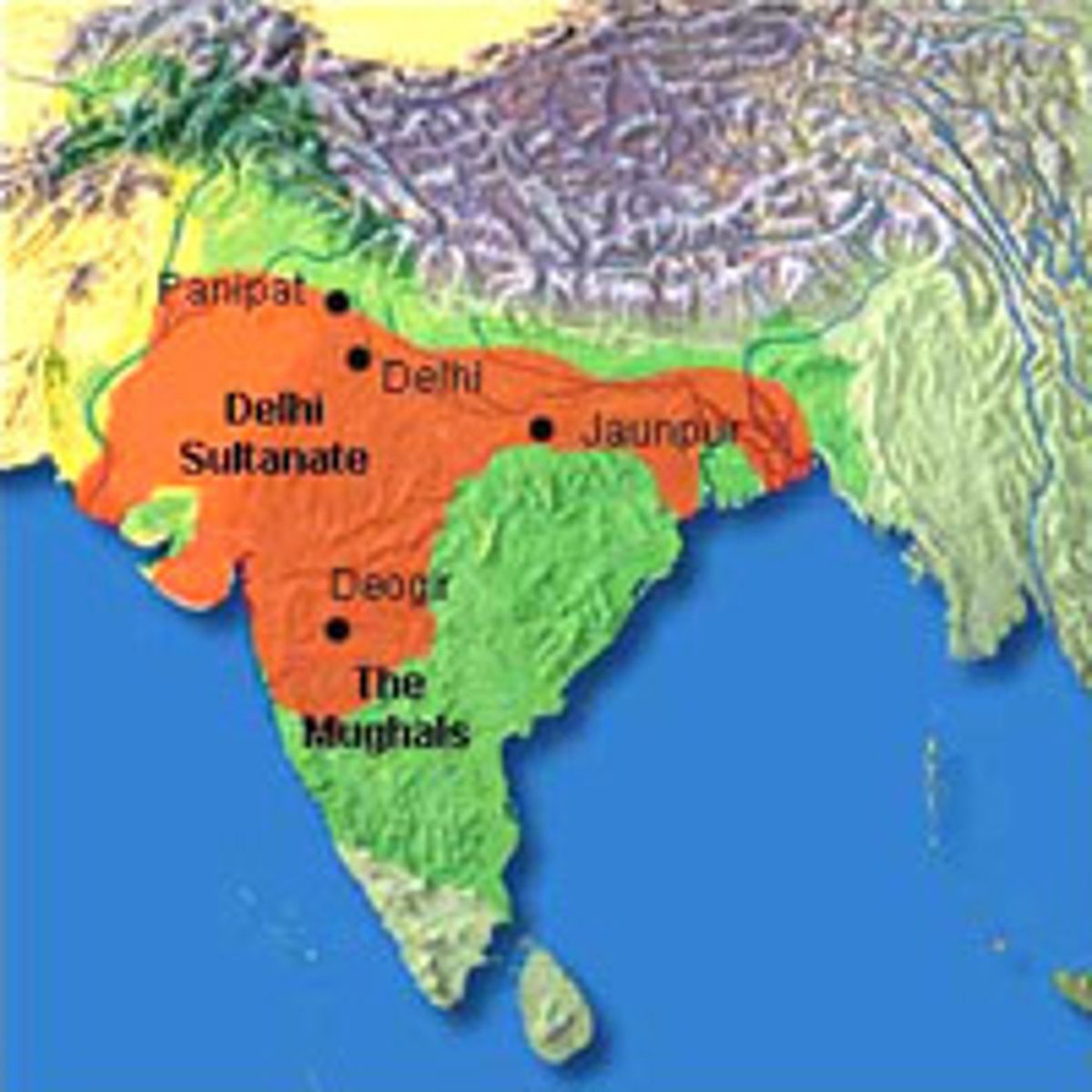
Vijayanagar Kingdom (1336-1565)
Southern Indian kingdom that served as a barrier against invasion by the Muslim sultanates of the north and fostered the reconstruction of Hindu life and administration after the disorders and disunities of the 12th and 13th centuries.
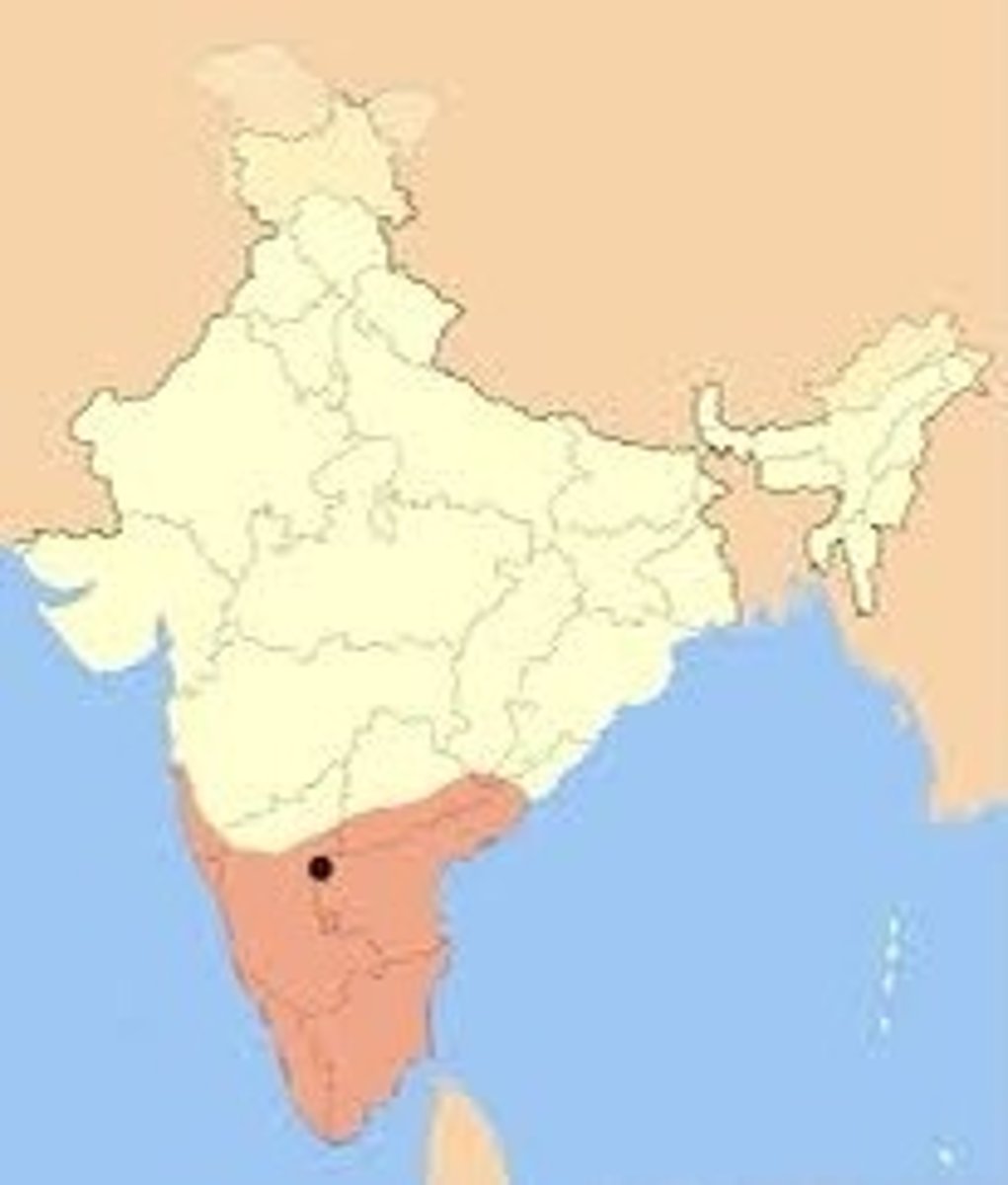
How were Hinduism and Buddhism significant in state-building in South and Southeast Asia in the period 1200-1450?
Rulers often consolidated power using Hindu and Buddhist principles, especially the caste system (social structure) and Buddhism was easily flexible and be syncretized with other belief systems.
Rajput Kingdoms
Set of kingdoms in Northern India that arose after the fall of the Gupta dynasty-- during the Delhi Sultanate, they retained their identity in several Hindu principalities. They were largely independent of one another (never united), but they could band together to resist Muslim forces. They eventually fell to the Mughals in 1527.
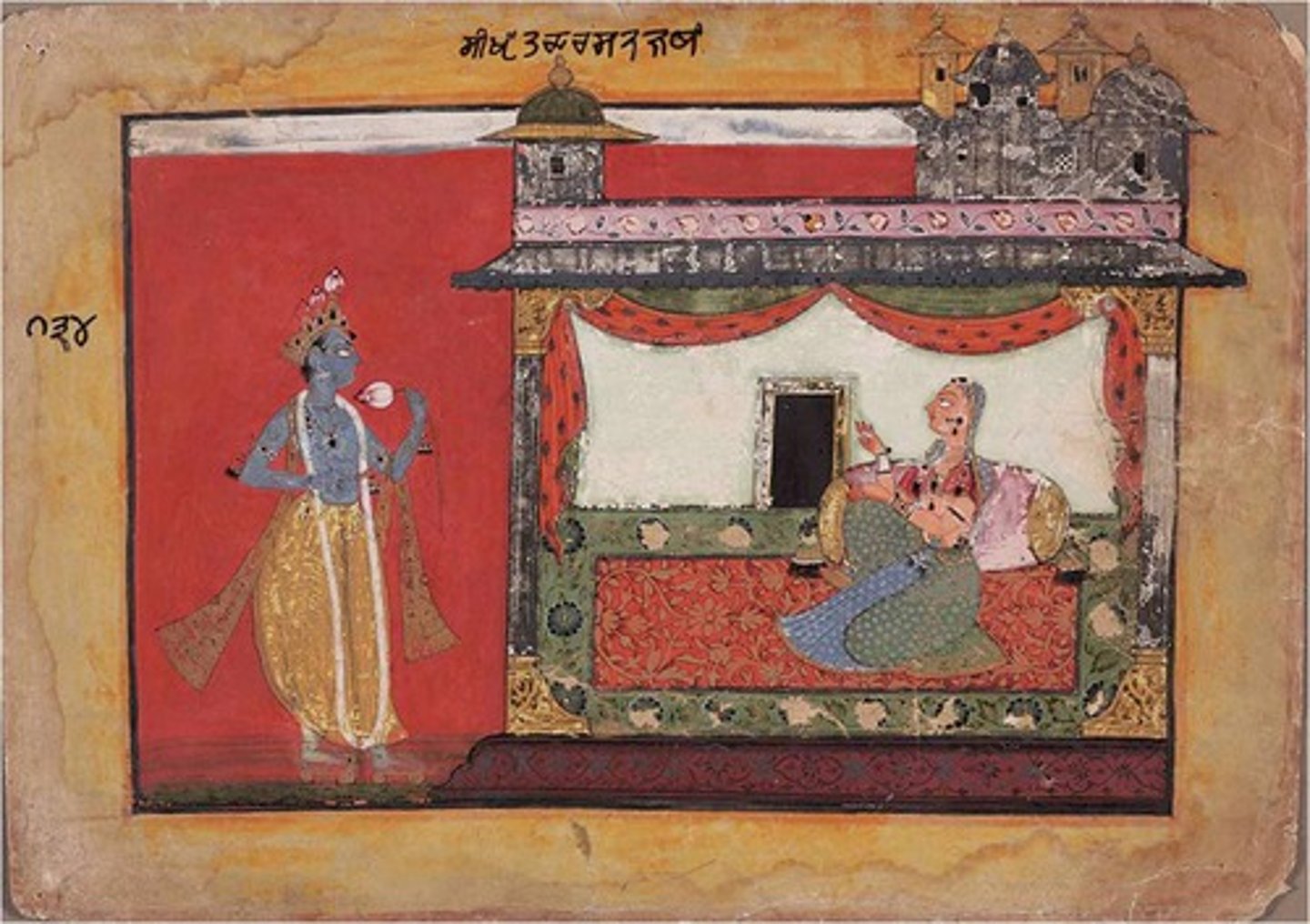
Khmer Empire (802-1431)
A powerful empire in Southeast Asia (modern-day Cambodia, Laos, Thailand) that became predominantly Hindu through the Indian Ocean Trade network (through trader, Hindu beliefs were carried to Southeast Asia). They were skilled as architecture, a prosperous economy led by women. They eventually fell to the Thais in 1431 (who migrated down because of Mongols in China).
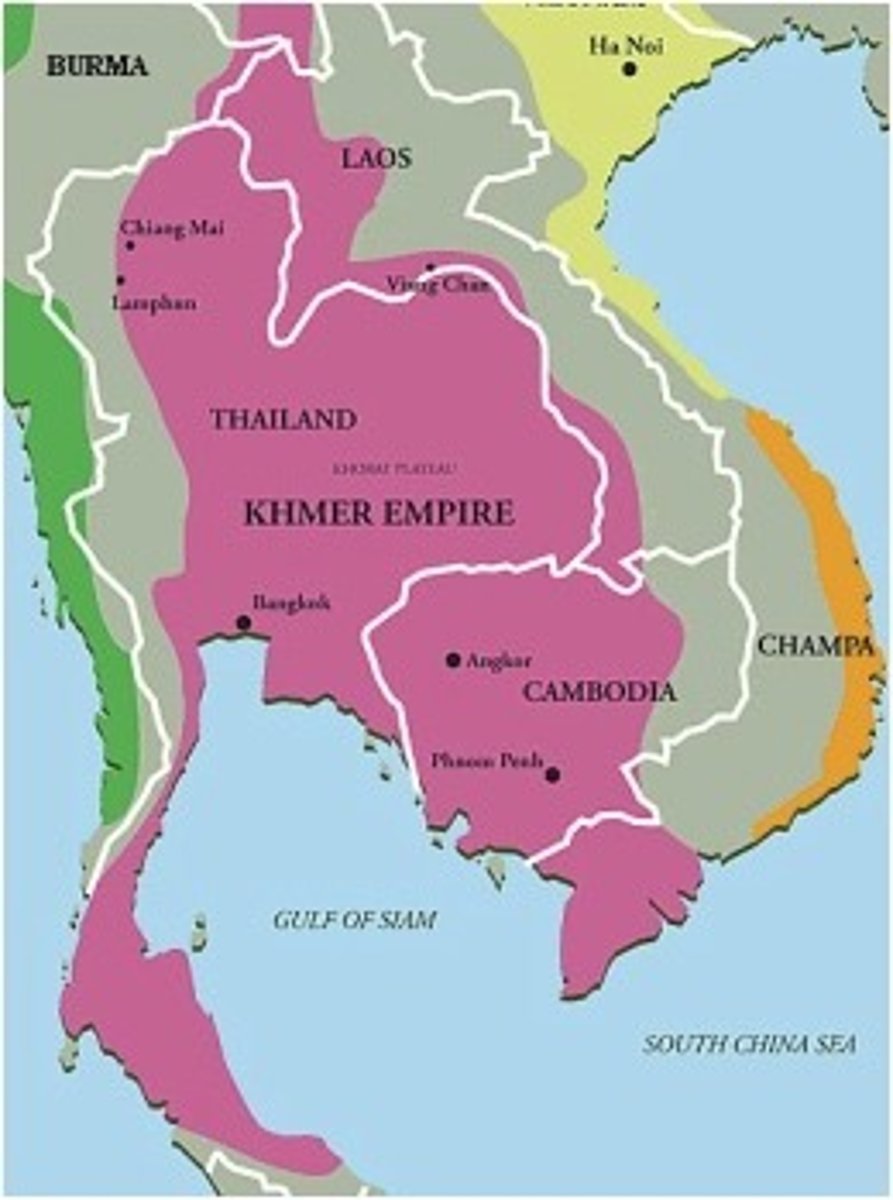
Mongol Empire
the largest land empire in the world, stretching across Eurasia from the Pacific Ocean to Eastern Europe. A nomadic culture unified by Genghis Khan in the early 1200s.
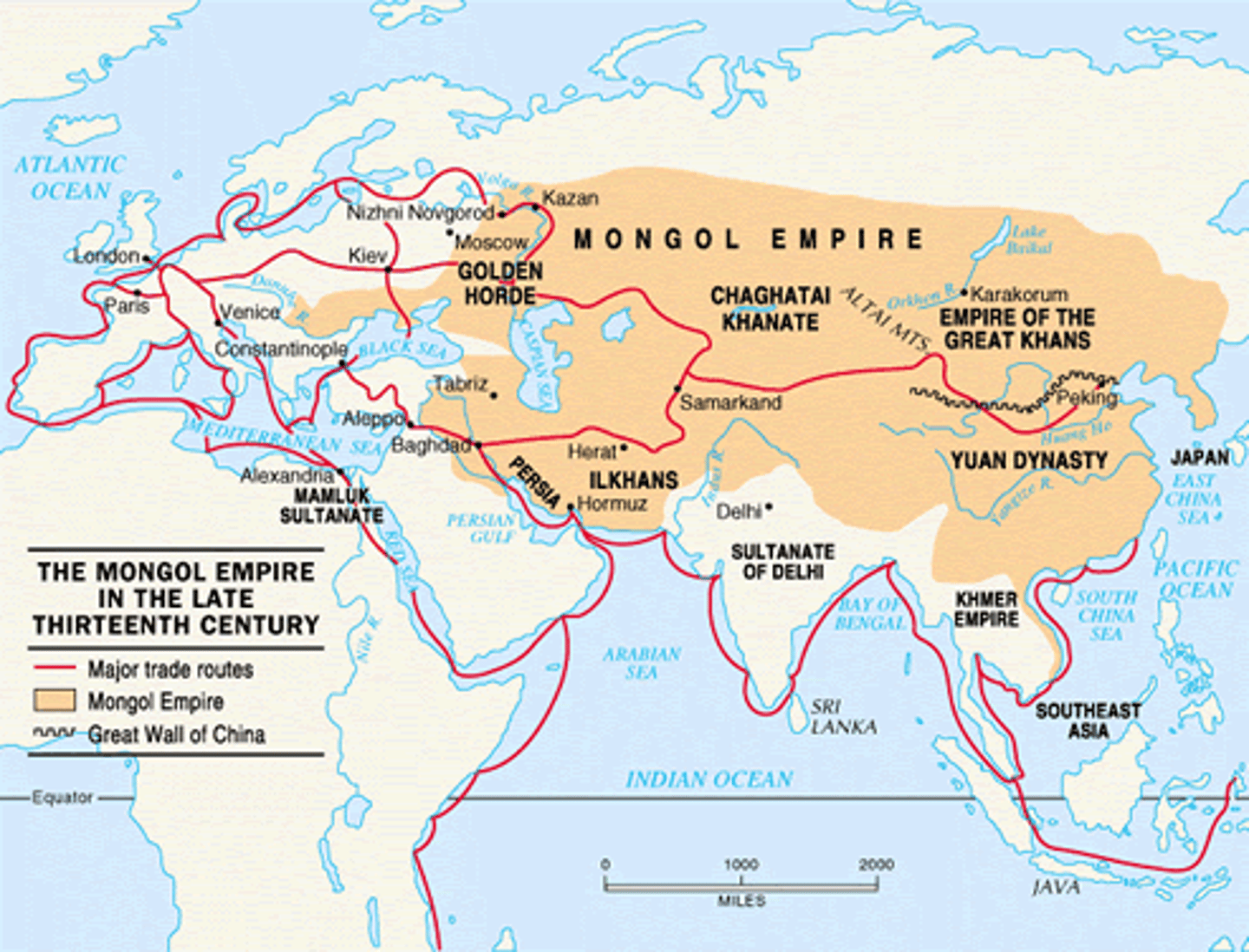
How did the Mongol Empire promote cross cultural interaction and the expansion of trade?
Since the empire was so large and covered most of Asia, it promoted the exchange of goods, culture, and disease because of superior infrastructure (like the Silk Road). Served as a stable conduit and tied most of the Old World together.
How did the Mongol Empire conquer so many different kinds of civilization from 1200-1450?
The Mongols did NOT impose their culture or unified religion on any of their conquered groups (unlike other major civilizations) and let them practice without interference. The Mongols were ruthless conquerors-- a lot of groups gave into the Mongols because they were known for being ruthless warriors that were militarily organized and mobile (would destroy entire villages if anyone put up a fight)
Impacts of the Mongol rule
-great diffusers of culture
-Russia did not culturally develop or unify like other European states because of the Golden Horde vassal state
- World trade and global awareness grew because of the empire's size and connectivity
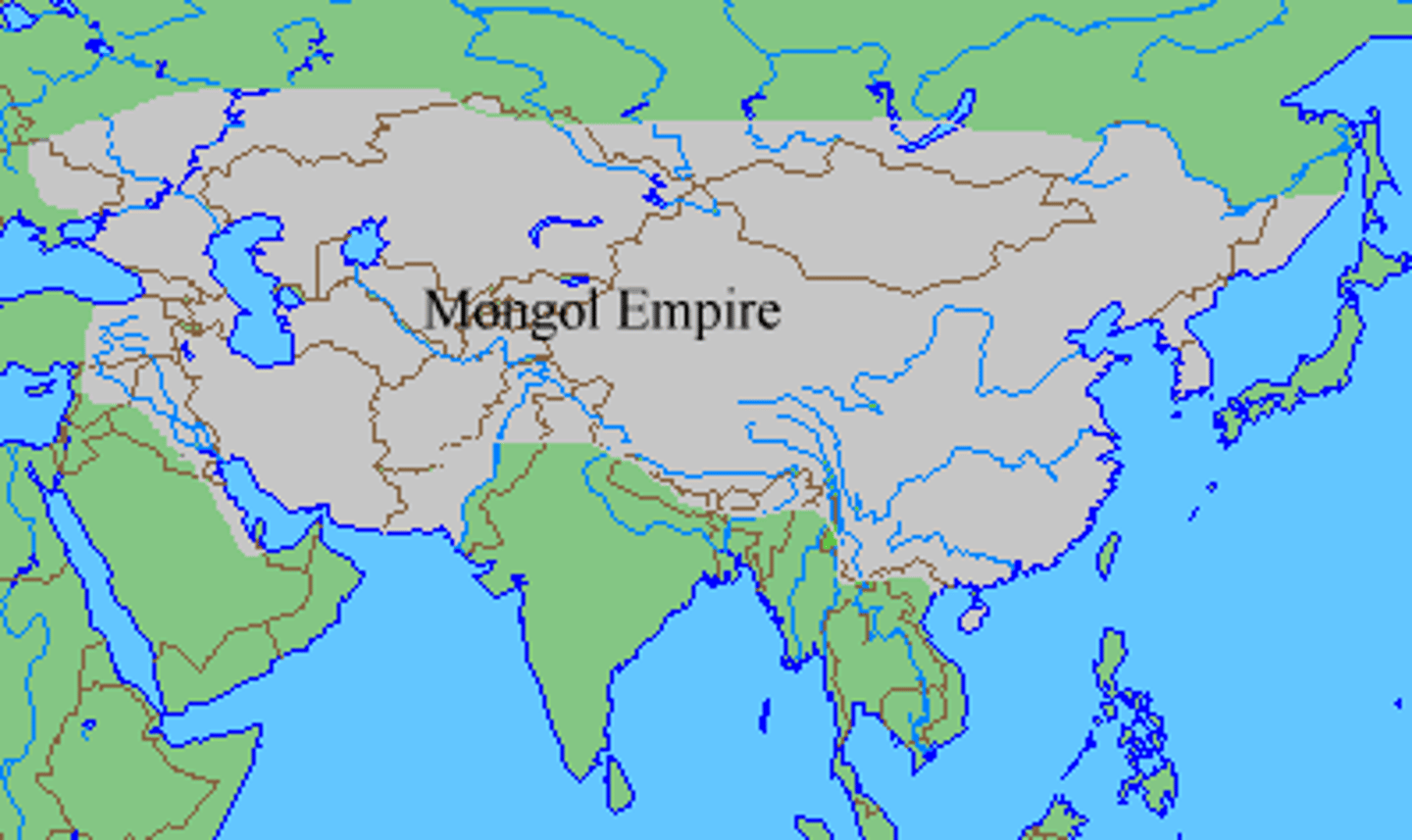
Mali Empire
From 1235-1400, this was a strong empire of Western African. With its trading cities of Timbuktu and Gao, it had many mosques and universities. The Empire was ruled by two great rulers, Sundiata and Mansa Musa. Thy upheld a strong gold-salt trade. The fall of the empire was caused by the lack of strong rulers who could govern well.
How did the rulers of Mali Empire increase their power?
Mali rulers centralized power much more than the Ghana Empire (predecessors) and gained a lot of wealth through trade of abundant gold (see: Mansa Musa).
They also adopted Islam from North African/Islamic traders in the elite class.
What brought about an explosion of trade in Africa in the Mali Empire?
Traders from the Islamic Empire crossed the Sahara via the Trans-Saharan routes and traded with African kingdoms.
Trans-Saharan Trade
A trade route that transformed West Africa by connecting it to the larger parts of the world. The biggest religion that spread across this trade route was Islam. Additionally, empires with valued goods expanded rapidly during this flourishing of the trade route, such as the Mali, Ghana, and Songhai empires.
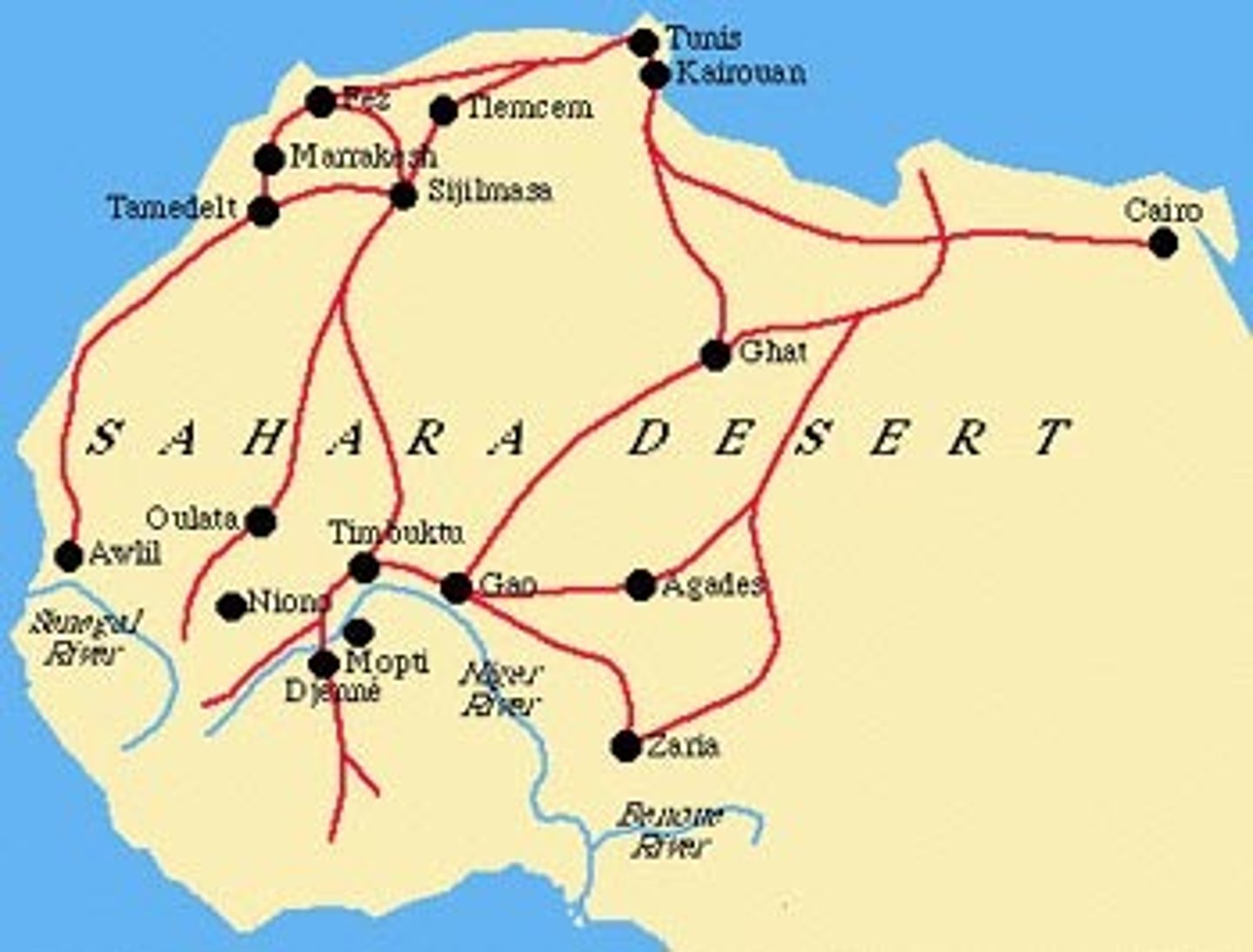
Mansa Musa
Emperor of the kingdom of Mali in Africa. He made a famous pilgrimage to Mecca and established trade routes to the Middle East.
How did the Aztecs maintain control of their empire?
The Aztecs ruled their huge empire remotely through a tribute system (no bureaucracy) where their conquered peoples paid through goods and were allowed to govern themselves; had a powerful professional military to enforce the system.
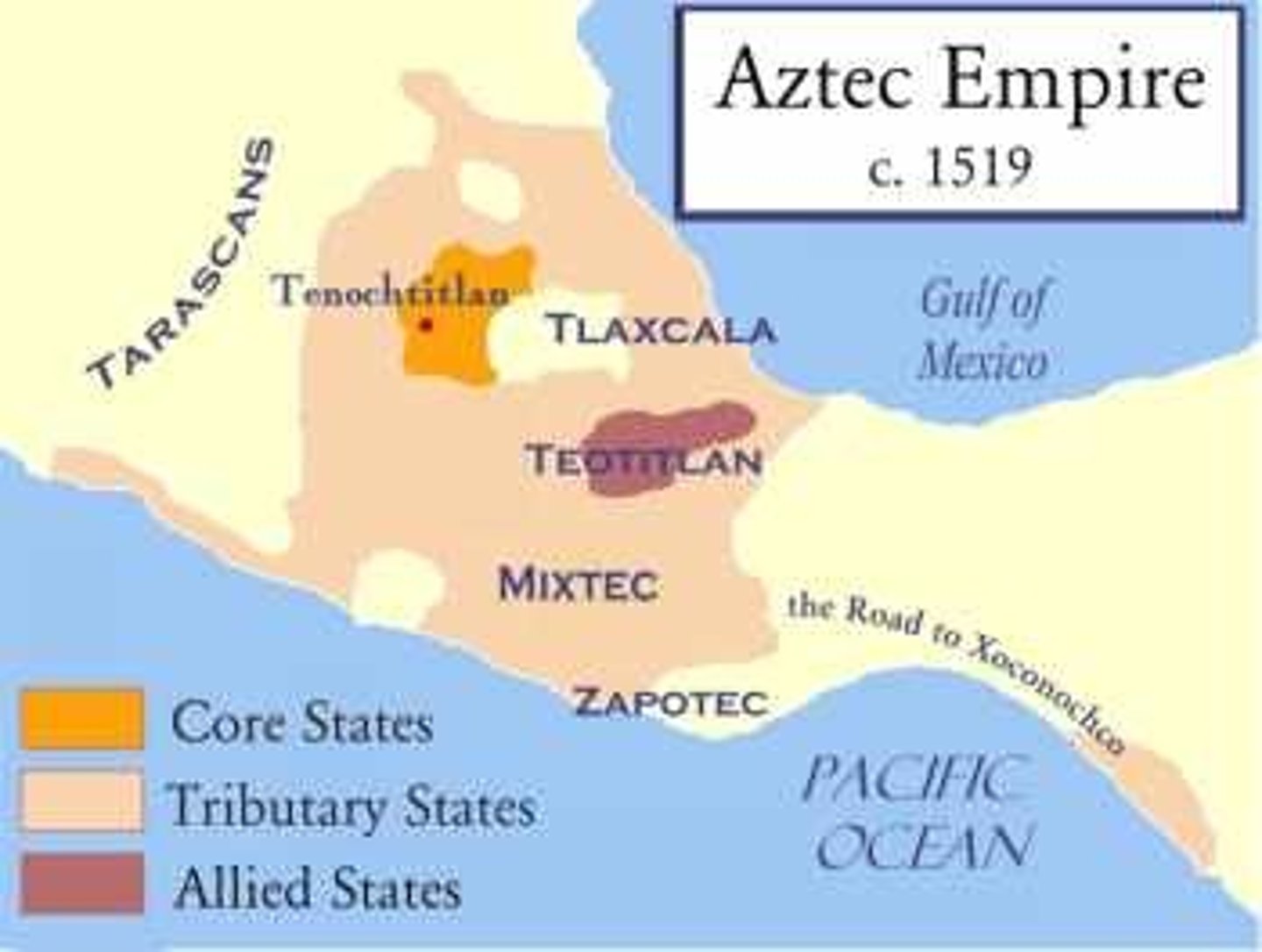
How did the Inca improve and maintain their state?
Used the mita system to rule, which required mandatory public service of its citizens. They had a bureaucracy that was unified through a national language (Quechua). Also developed complex roads systems leading to capital at Cuzco.
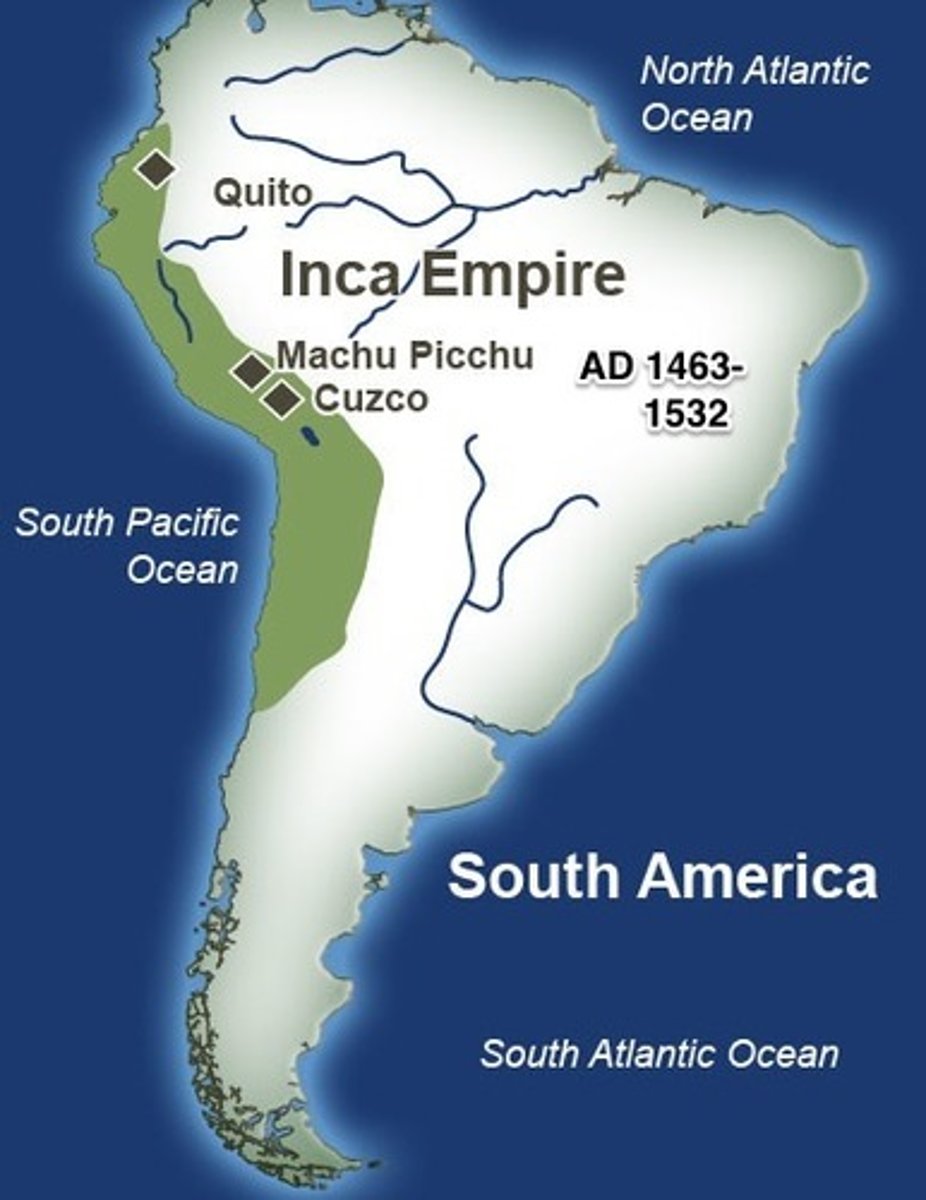
What exploded onto the world scene in the period from 1200-1450?
The world became connected through TRADE, aided by improvements in infrastructure, boats, monetary systems. Trade routes promoted intercultural interaction and enabled the spreading of culture, religion, languages, and disease (along with goods)
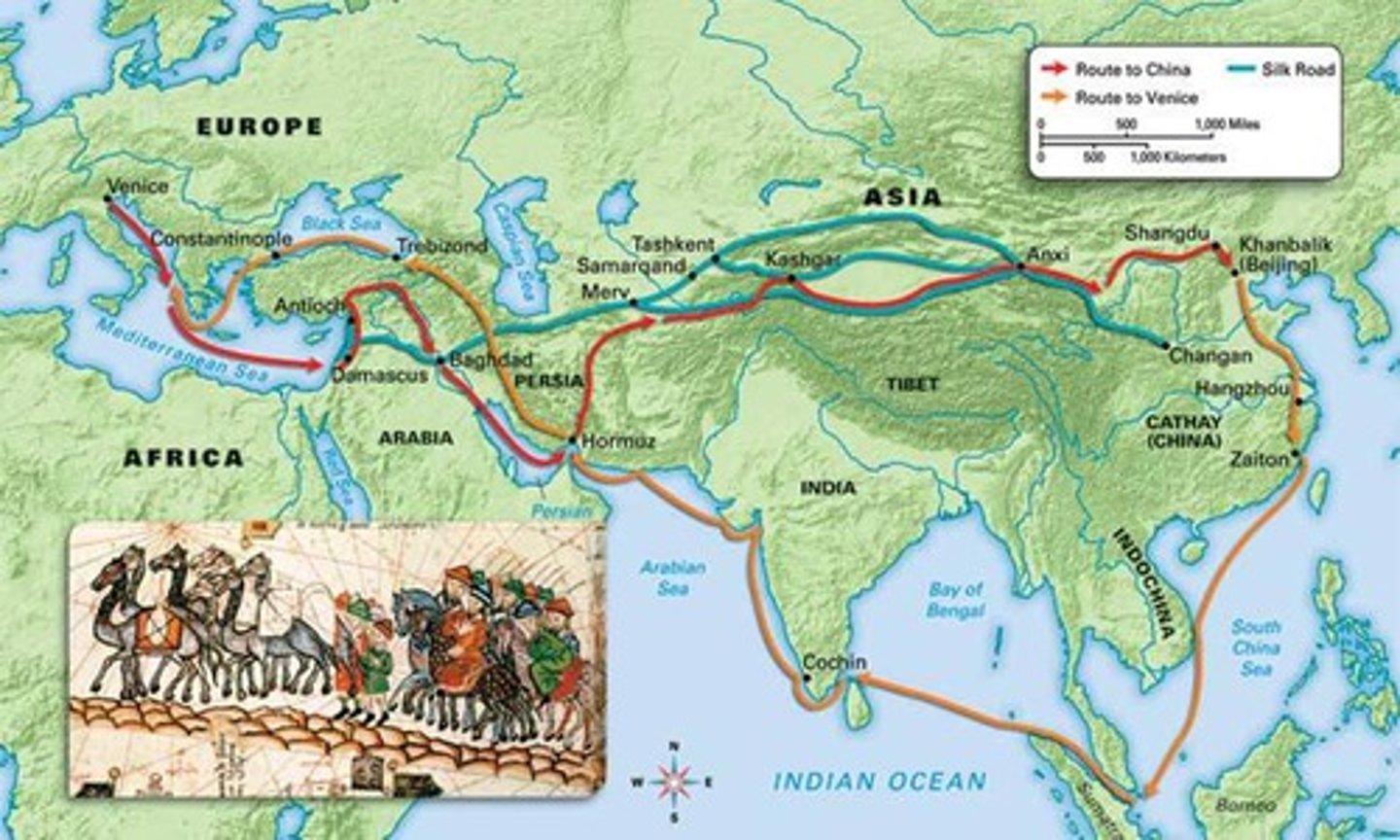
Silk Road
A major trade land-based trade route that connected most of Eurasia, as it spanned from China to Europe. Became extremely safe and stable during Mongol rule, which promoted inter-region trade.
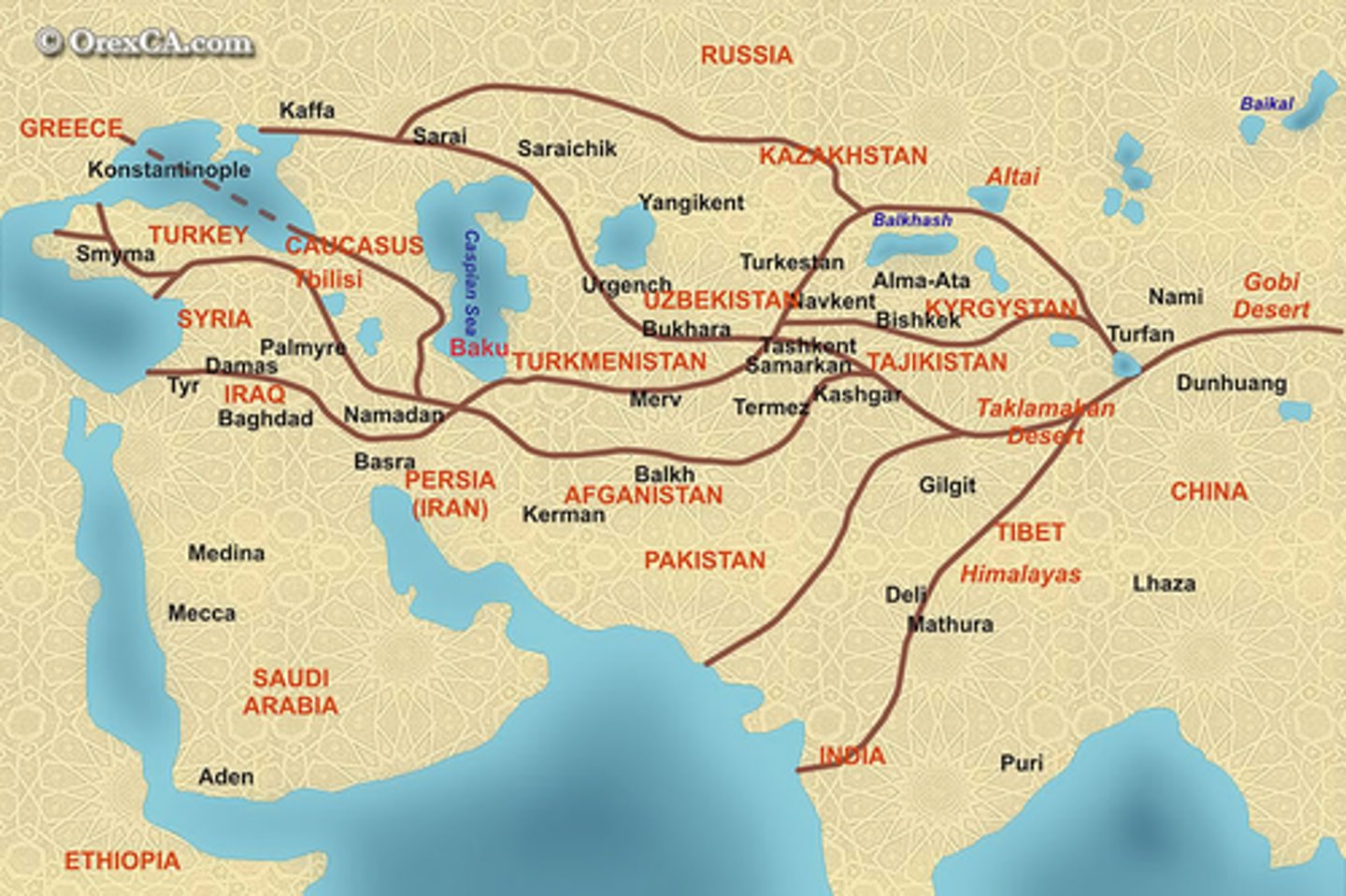
Indian Ocean Trade
a maritime system that connected to Europe, Africa, and China.; the world's richest maritime trading network and an area of rapid Muslim expansion.
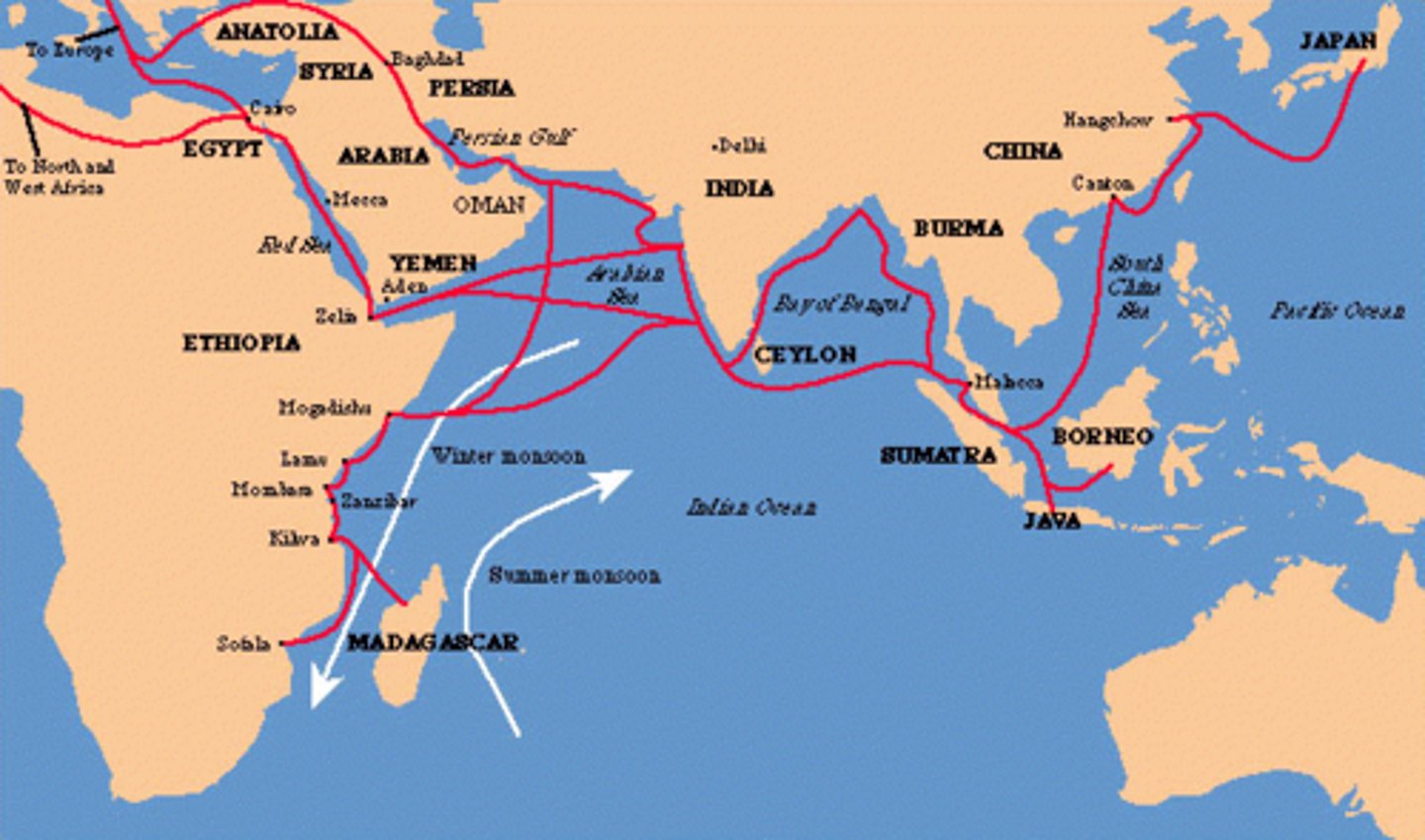
Trans-Saharan Trade
trade routes that connected Islamic North Africa and the Mediterranean to sub-Saharan African kingdoms. Led to the spread of Islam to West Africa and the emergence of the Mali Empire as a powerful trading state. Timbuktu emerged as a trading post on the trans-Saharan caravan route and as a center of Islamic culture. Connected Africa to worldwide trade.
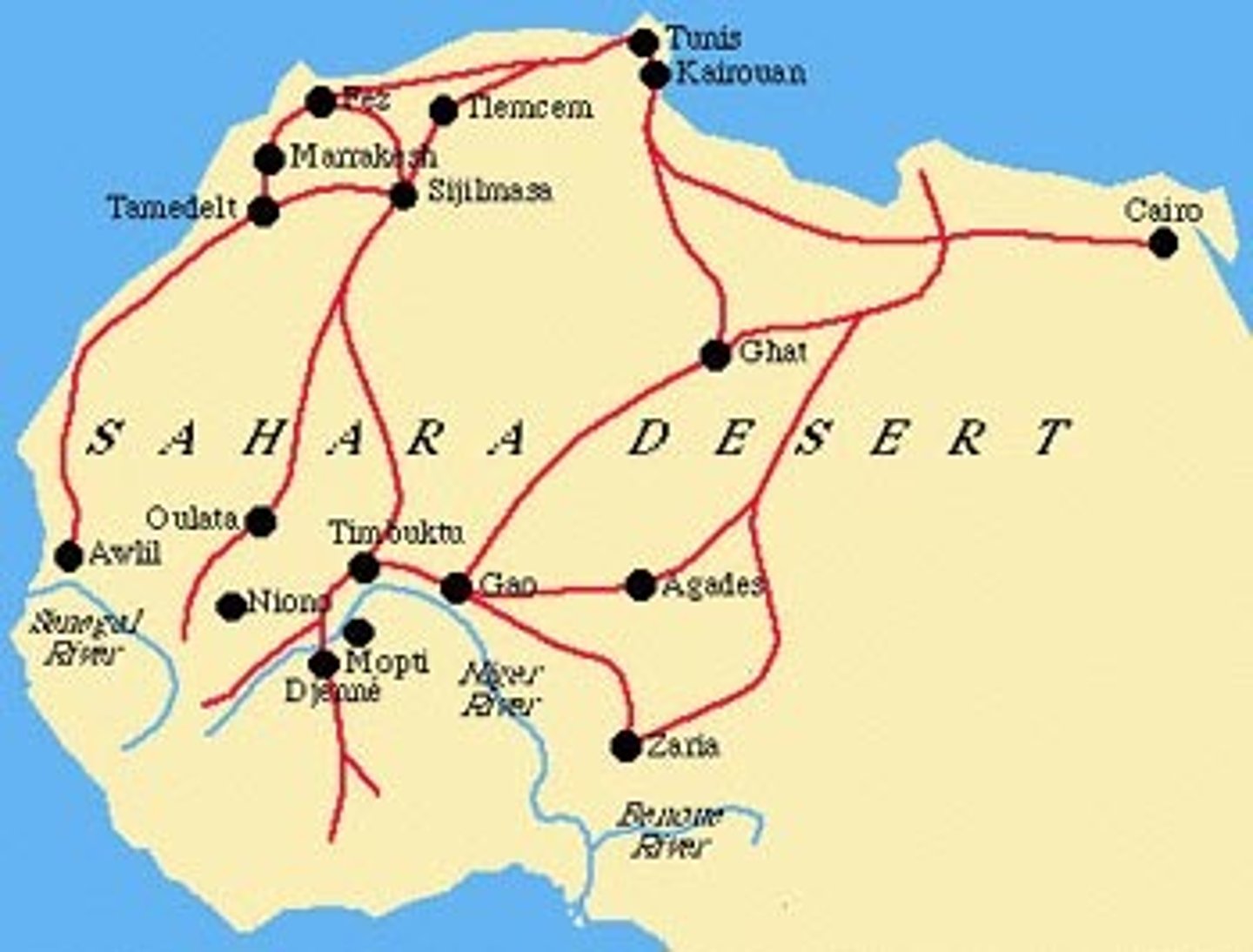
What similarities were found in all trade routes from 1200-1450?
-All the major trade routes depended on large states in order to flourish (the Mongol Empire provided stability and security to the Silk Road)
-all trades led to an exchange of culture between different regions, such as religion, traditions, language
- powerful trading cities emerged at the convergence of these trade routes
- establishment of diasporic trading communities and powerful trade states
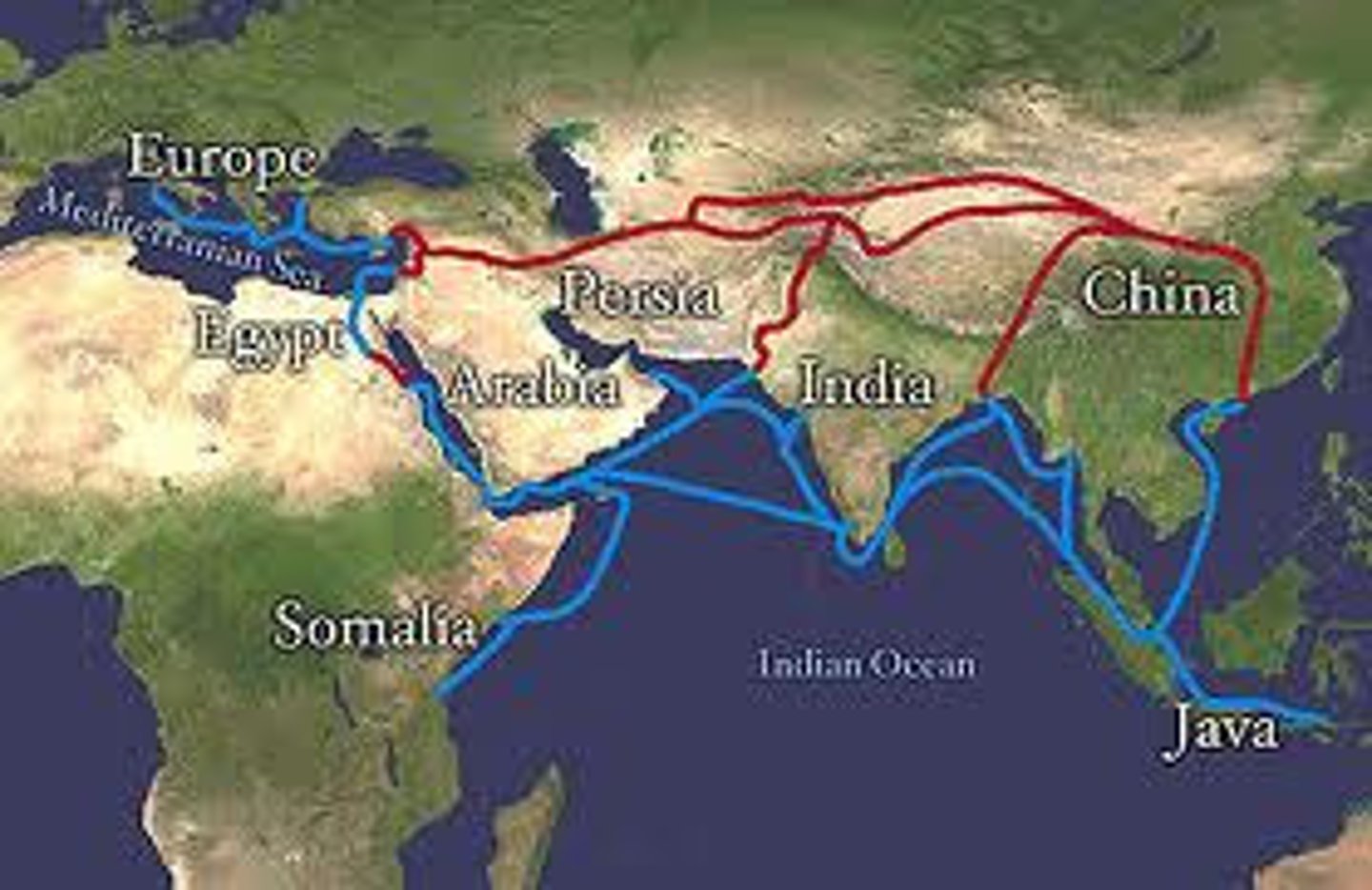
What were some differences between the 3 major trade routes in 1200-1450?
different goods traveled along the different trade routes (Silk Road = luxury goods like silk, porcelain; Indian Ocean = also common goods; Trans-Saharan = salt, gold, slaves)
Different religions spread along the routes (Silk Road = Buddhism, Christianity, Islam, Neo Confucianism; Indian Ocean = Islam, Buddhism, Hinduism; Trans-Saharan = Islam)
Different technological innovations were created (Silk Road = manufacture, printing techniques, gunpowder; Indian Ocean = navigational advances)
How did culture change due to connections on trade routes in 1200-1450)
There was a heavy expansion of religion, as major religions (Islam, Buddhism, Christianity) spread through Afro-Eurasia via trade routes by merchants. This led to the weakening of indigenous religions or its syncretism with new religions (such as Confucianism + Buddhism = Zen Buddhism ; Bantu language + Islamic Arabic = Swahili)
How did world travelers lead to increased global awareness in the period 1200-1450?
Travelers, such as Marco Polo and Ibn Battuta, traveled to different places and brought back information and stories from these foreign places. This resulted in a stronger desire in these societies to forge contact with other regions of the world.
Marco Polo
Venetian merchant who traveled along the Silk Road to Yuan China and became an ambassador to Kublai Khan. His accounts of his travels to Yuan China offered Europeans a firsthand view of Asian lands and stimulated interest in Asian trade.
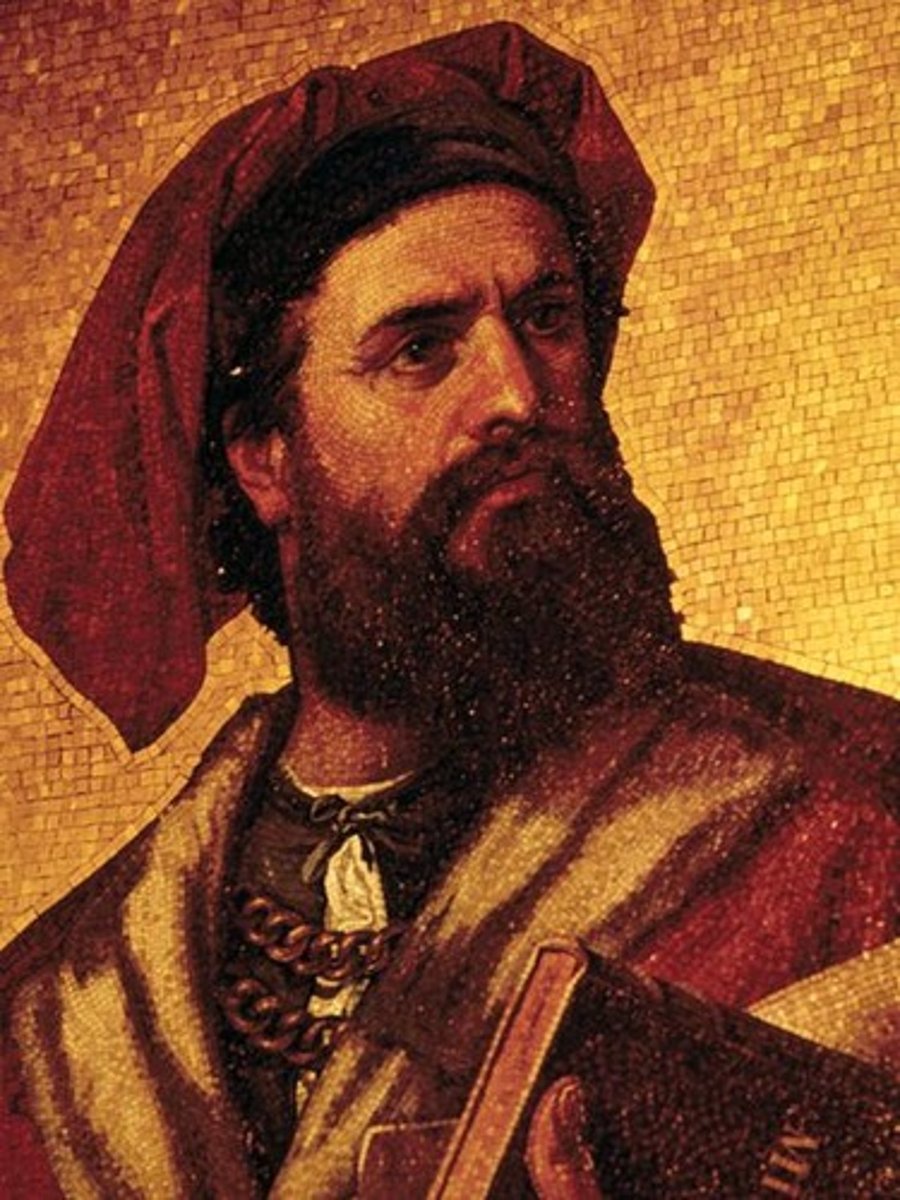
Ibn Battuta
Moroccan Muslim scholar, the most widely traveled individual of his time. Traveled all around Dar-al Islam. He wrote a detailed account of his visits to Islamic lands from China to Spain and western Sudan, spurring more Africans to increase contact with the rest of the Islamic world.
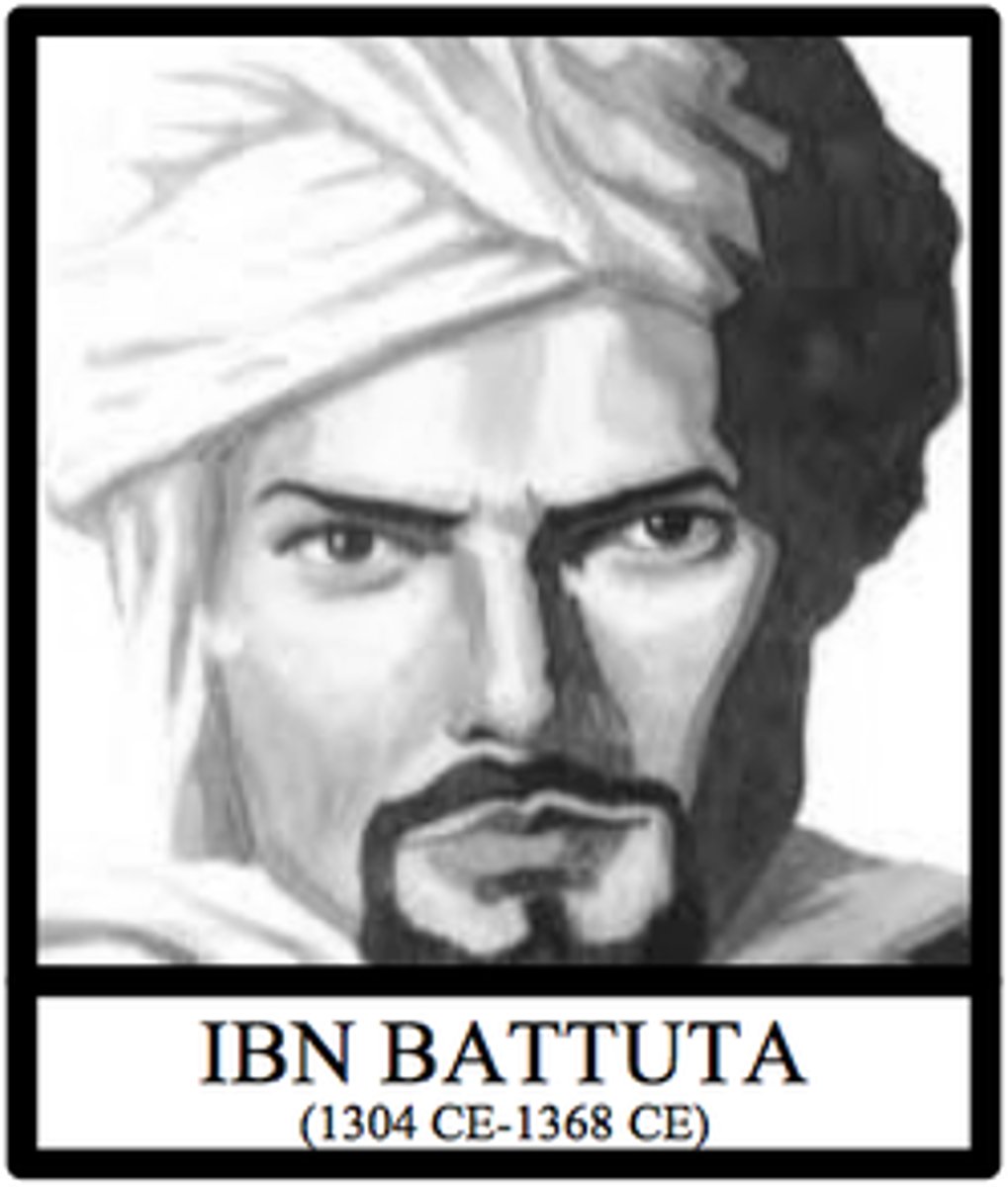
How did trade affect the environment in Afro-Eurasia from 1200-1450?
-Trade led to the spread of different agricultural goods to new regions, such as Champa Rice in China From tribute of Vietnam (enabled massive population growth) and bananas to Bantu people in Africa (enabled their migration to more regions of Africa)
- spread diseases faster, such as the Black Death, which originated in China and spread via the Mongols to Afro-Eurasia by the Silk Road
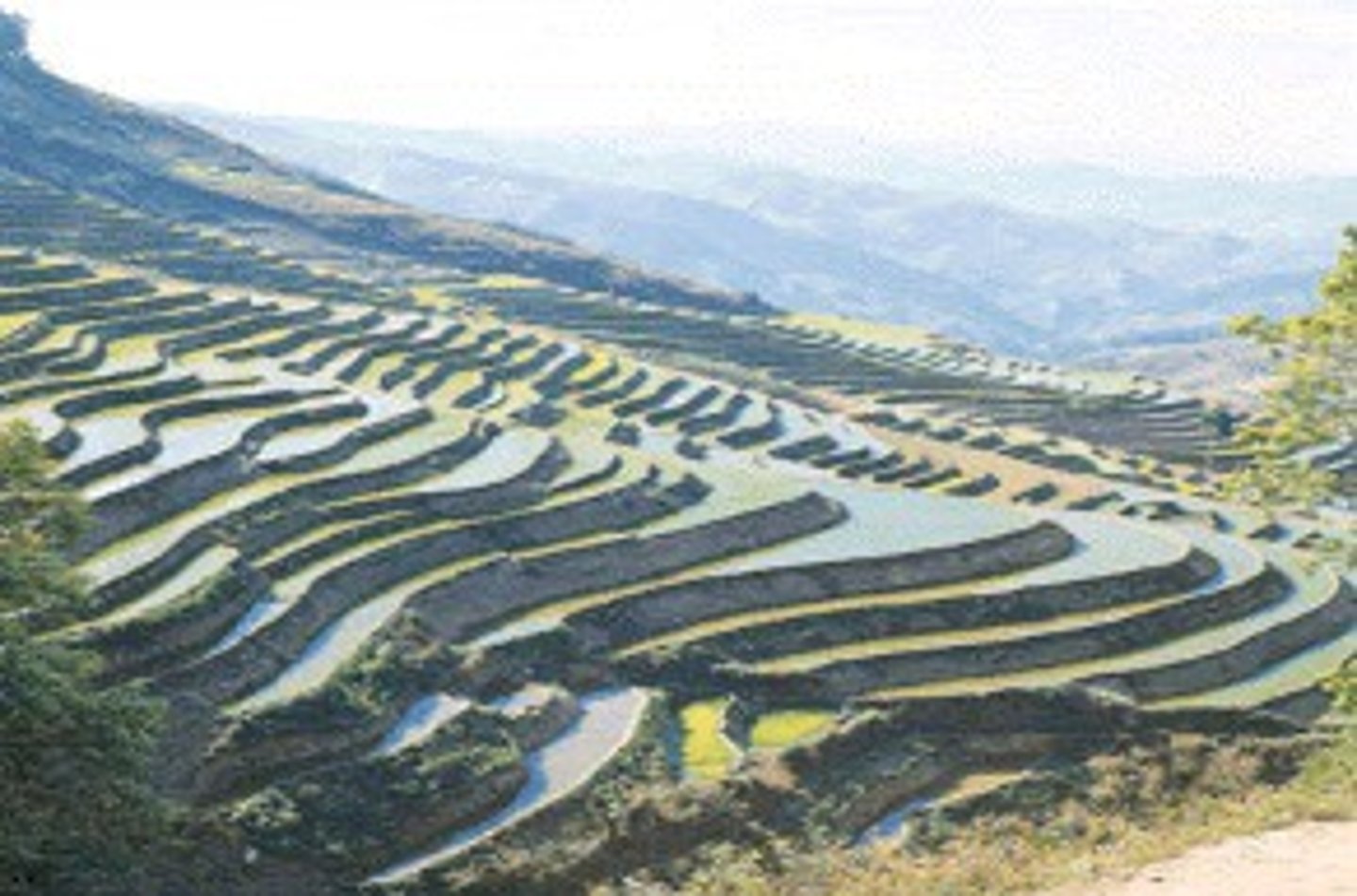
How did Genghis Khan succeed as a conqueror and ruler of the Mongol Empire?
Khan united the rival tribes of Mongolia into one consolidated empire known for their reputation of brutality. They had a highly organized army that overran villages and conquer most places.
How did the Mongols revitalize trade on the Silk Road?
Since the empire stretched across most of Eurasia, they were able to provide stability and security to the Silk Road, which allowed more merchants to travel safely. They created an era known as Pax Mongolica, which allowed trade to flourish.
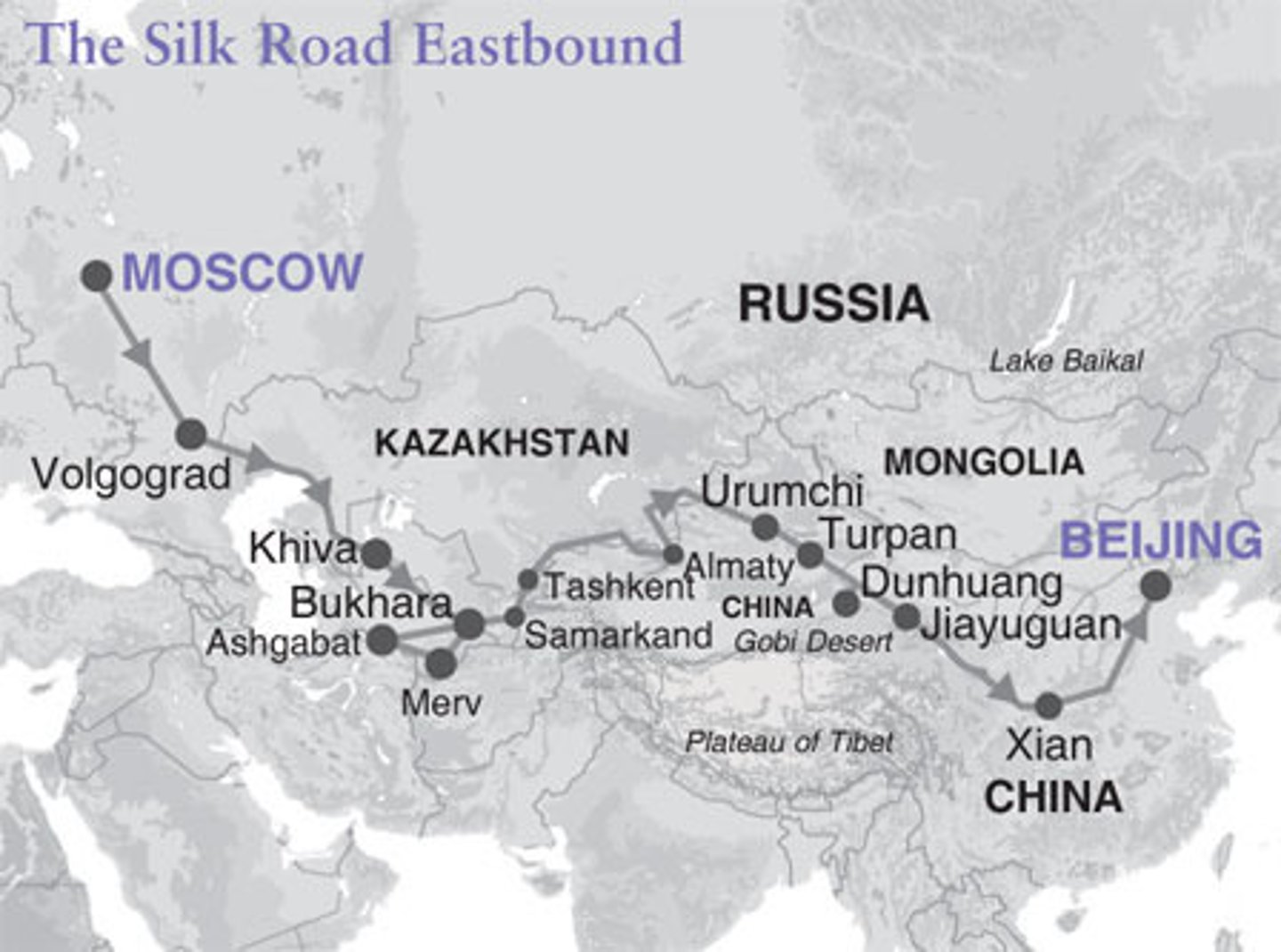
What was the cultural legacy of the Mongol Empire?
Overall, had a small cultural legacy (no new religion, language, etc.) because they allowed conquered regions to practice their own customs. BUT, because of their superior CENTRALIZATION, after their fall, many states consolidated power following the Mongol example.

Was there a global trade network from 1200 to 1450?
Yes, the world (excluding New World) was interconnected by all of its trade routes--> Europe traded with Islamic Empire, Russia; Islamic empire traded with Africa, India, China; India traded with China and east Africa; China also traded with Japan and Southeast Asia
